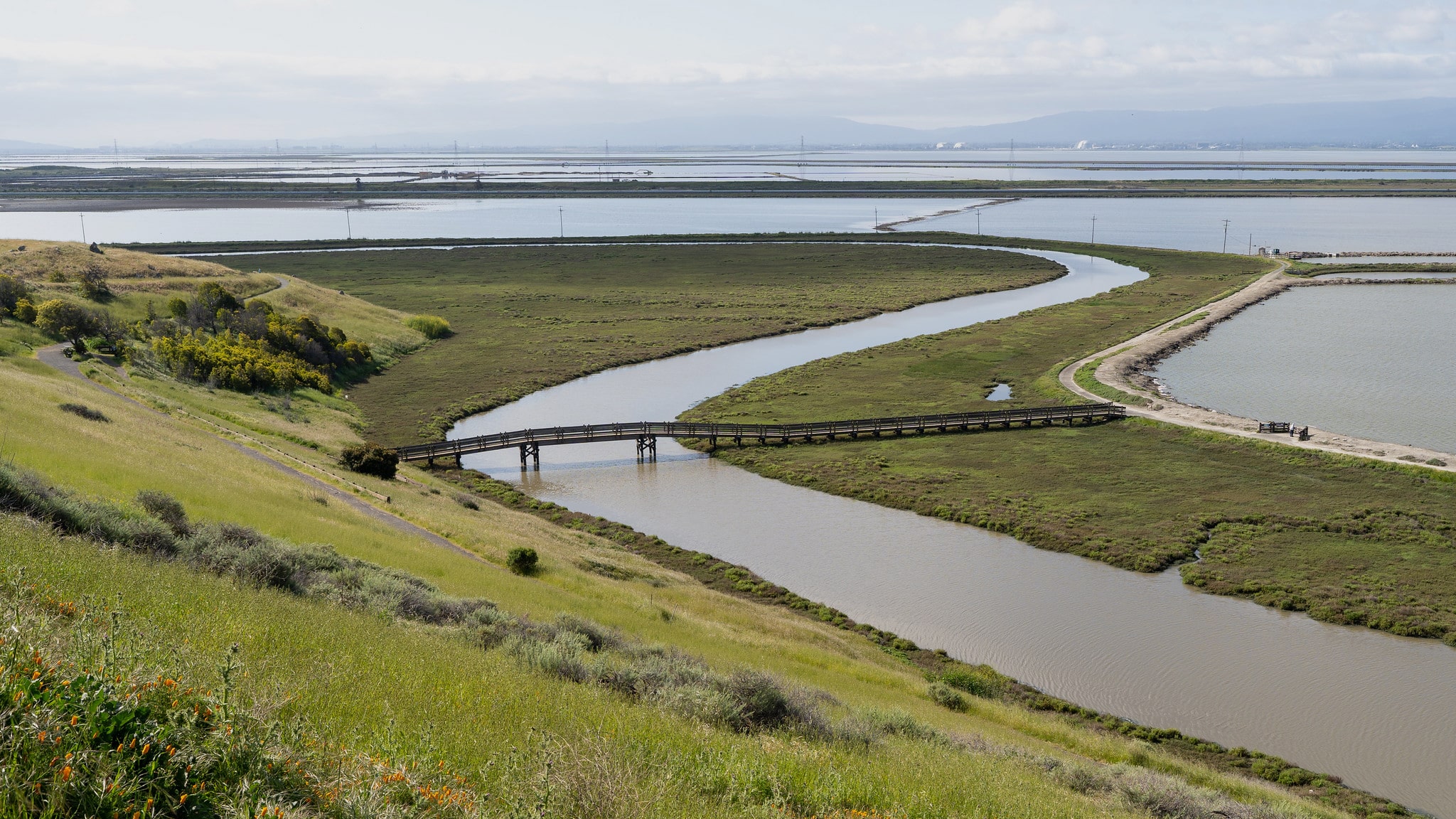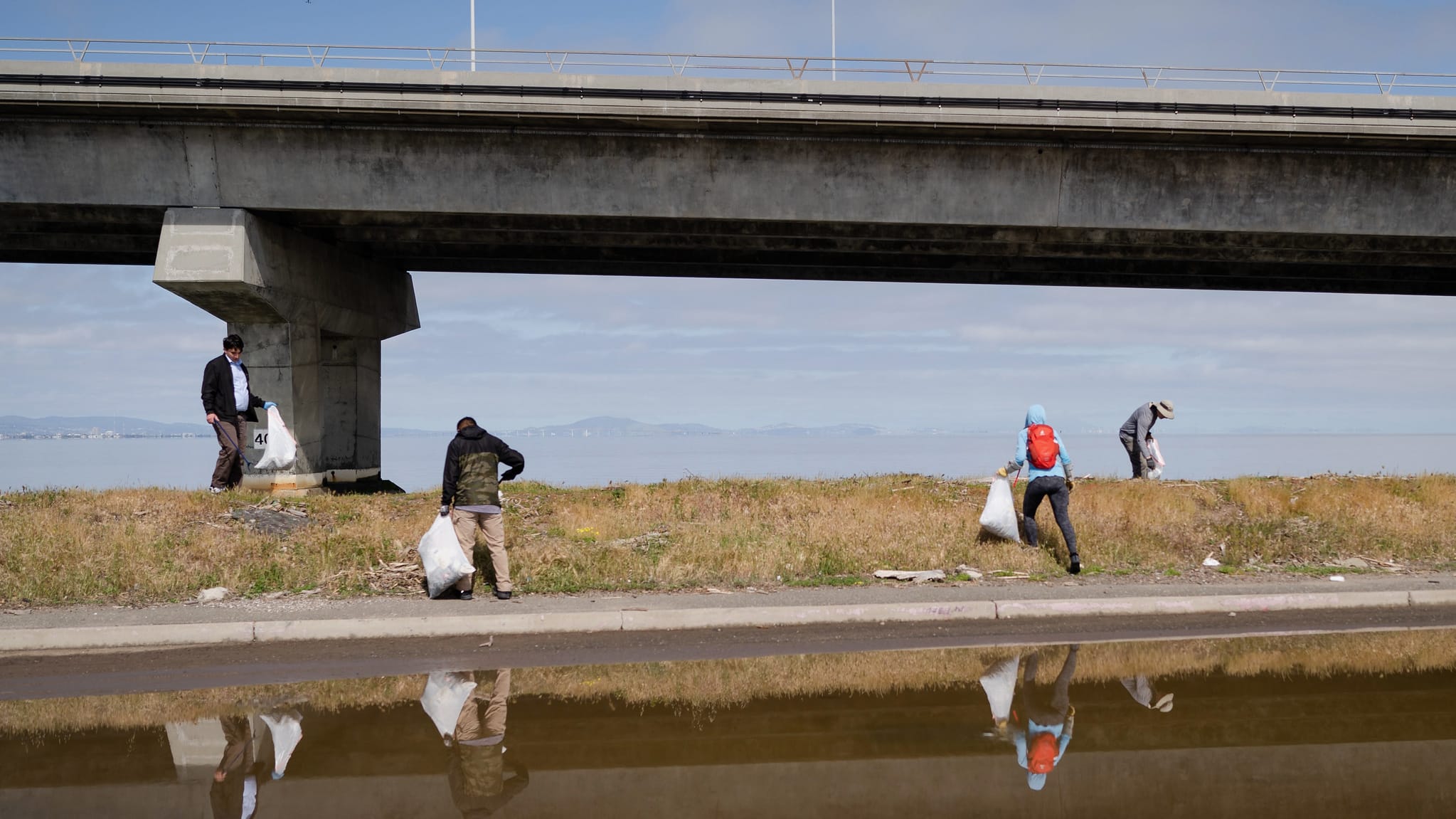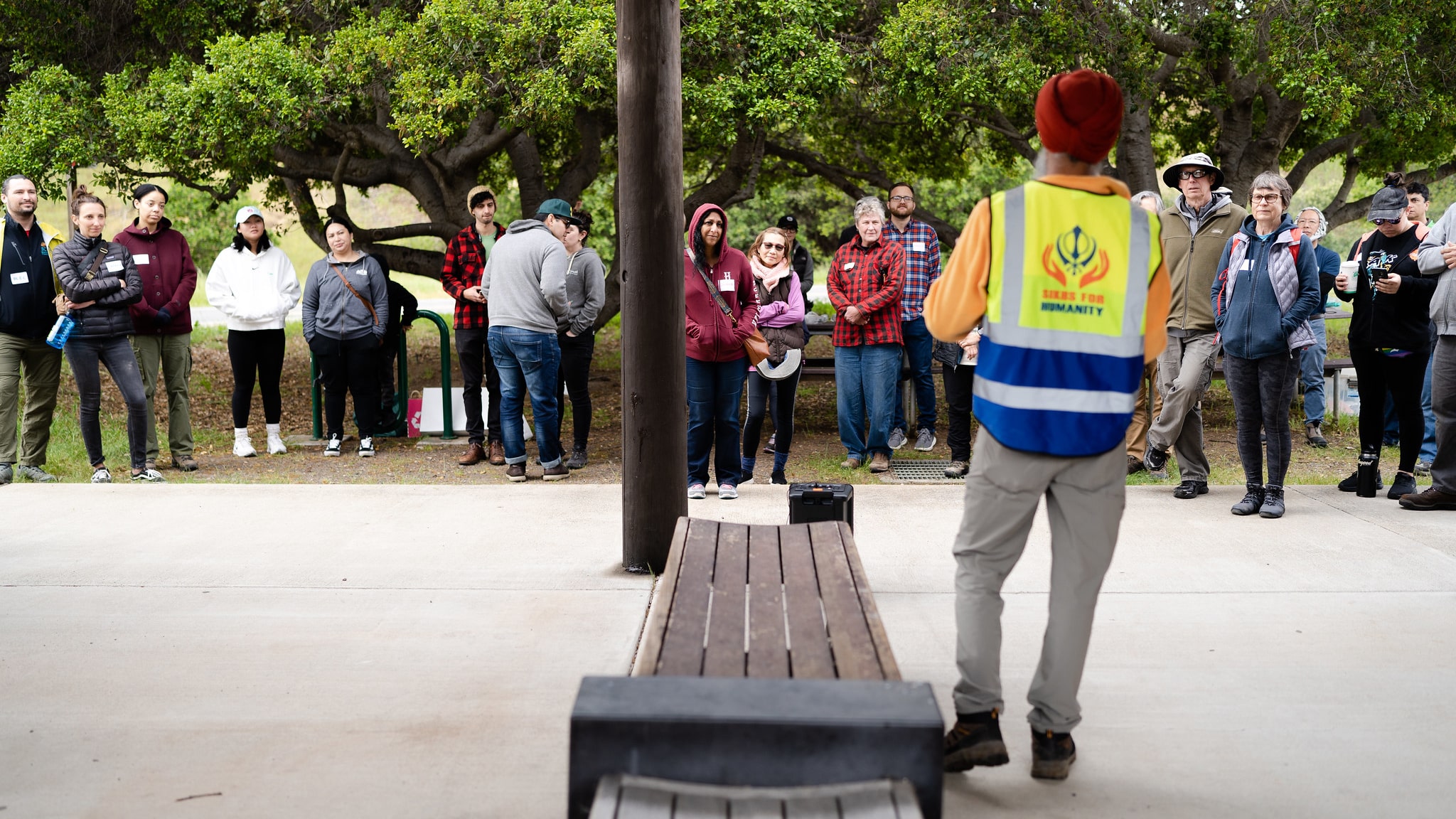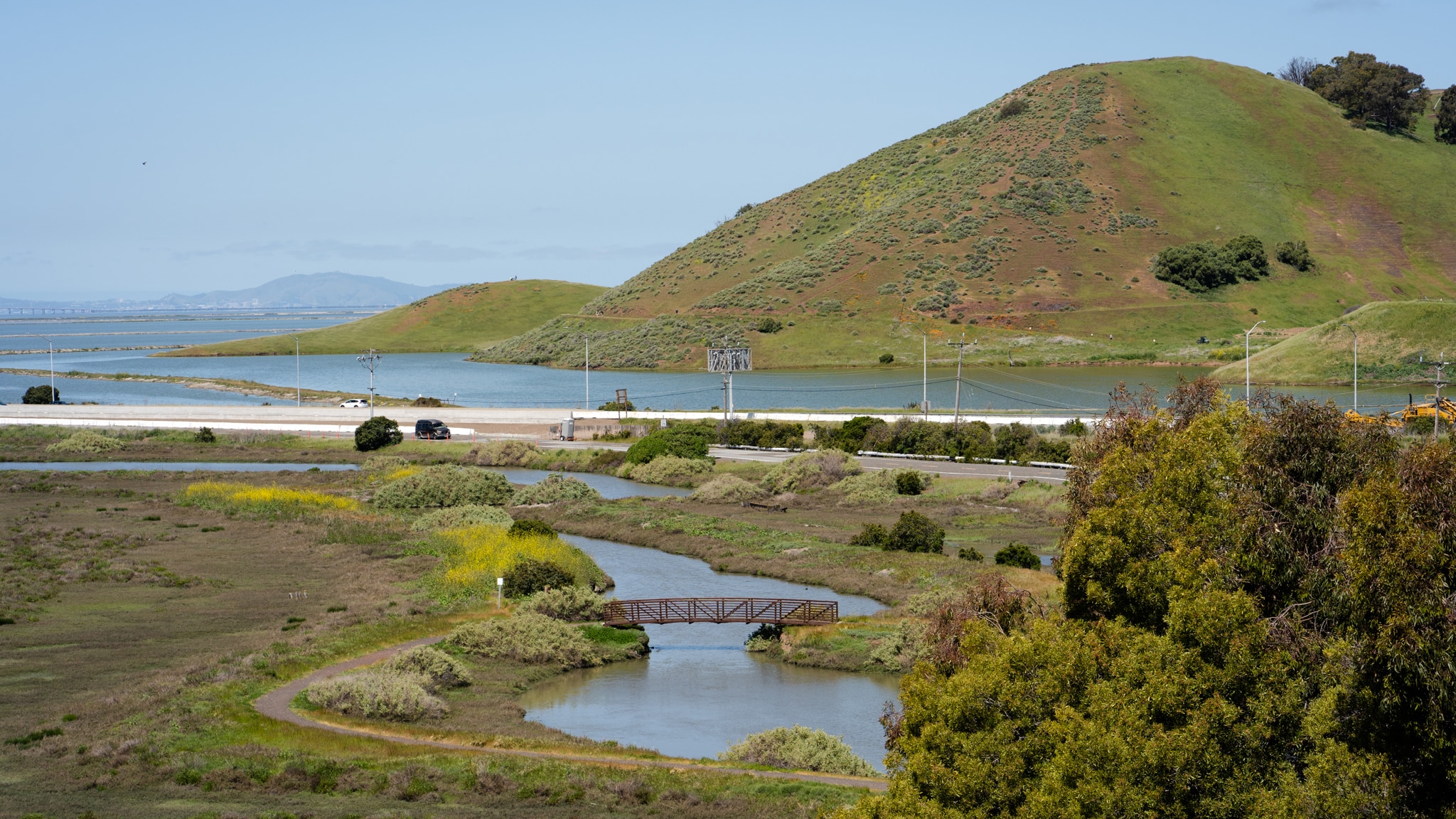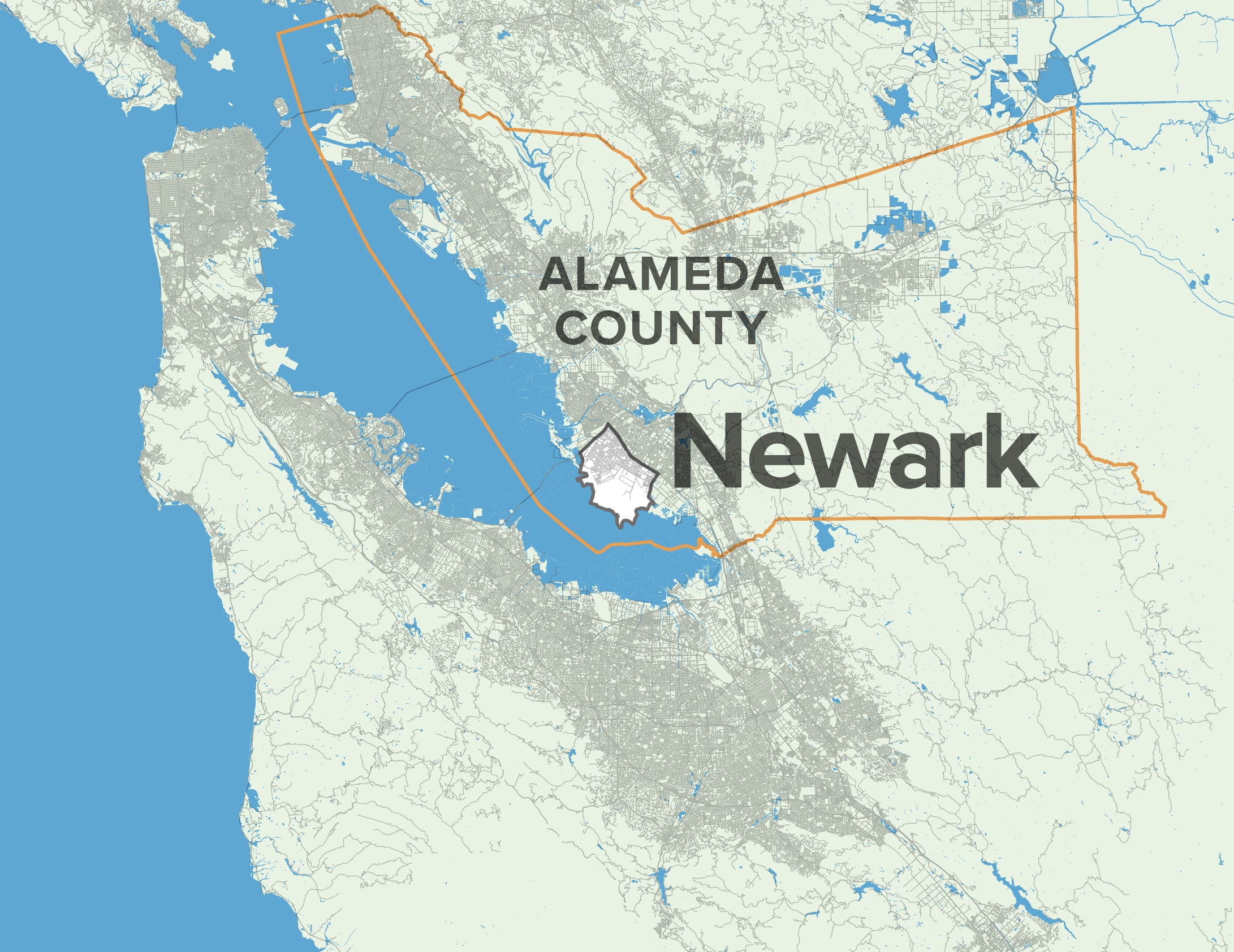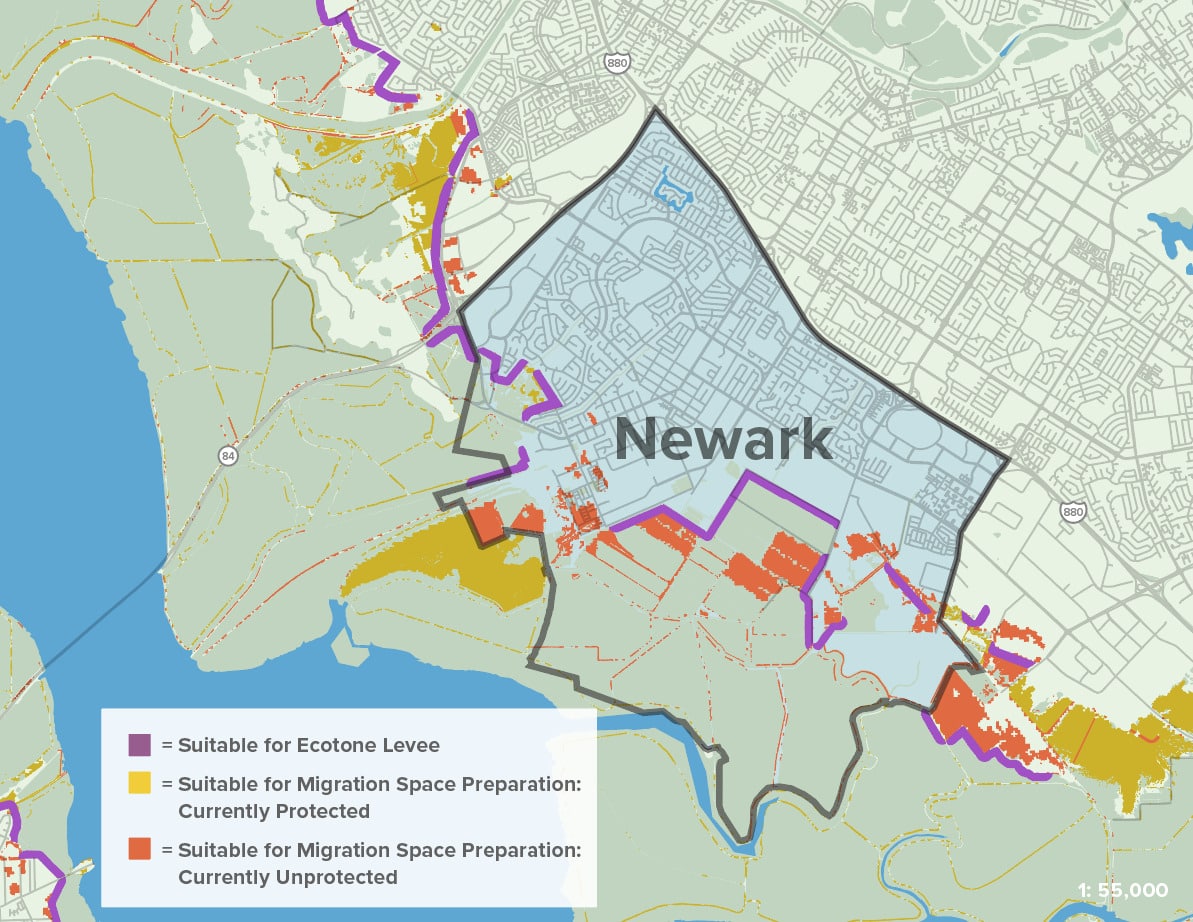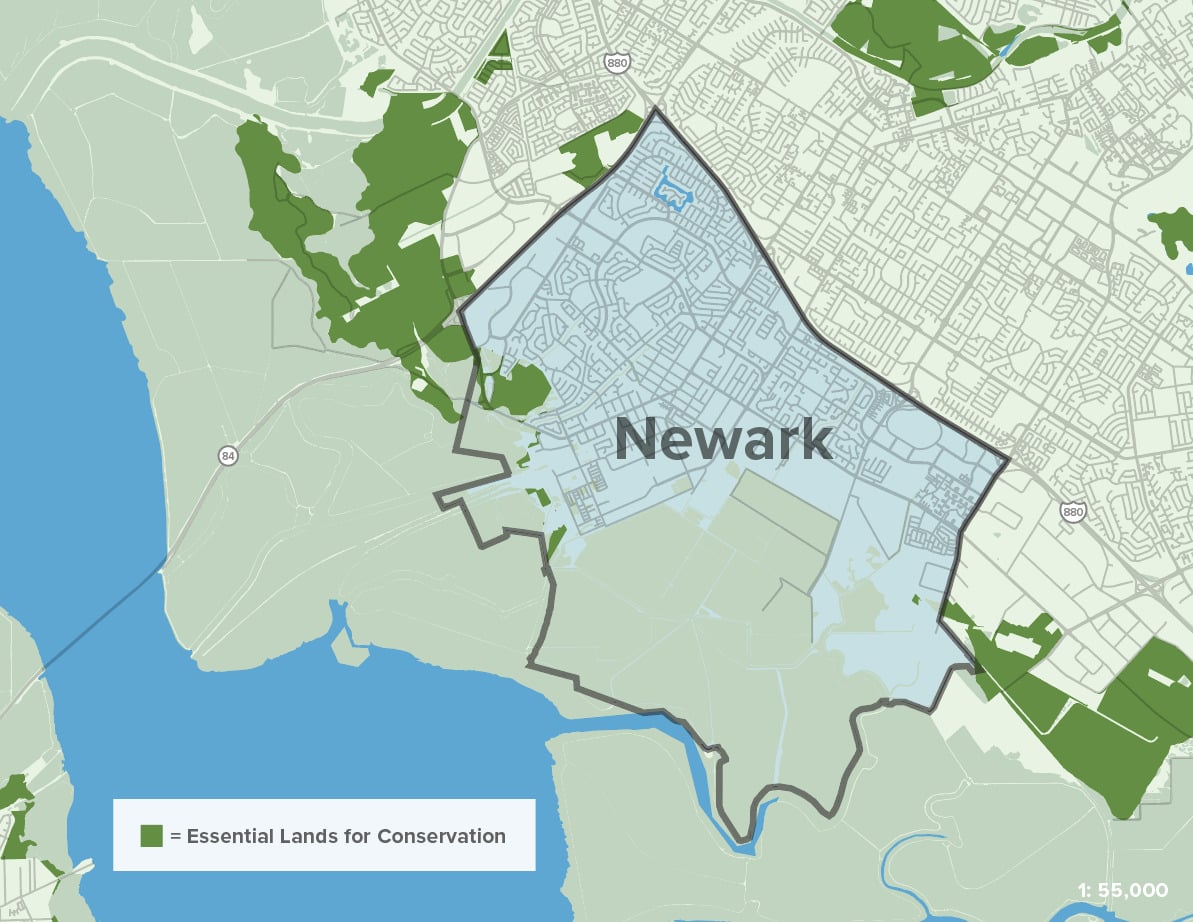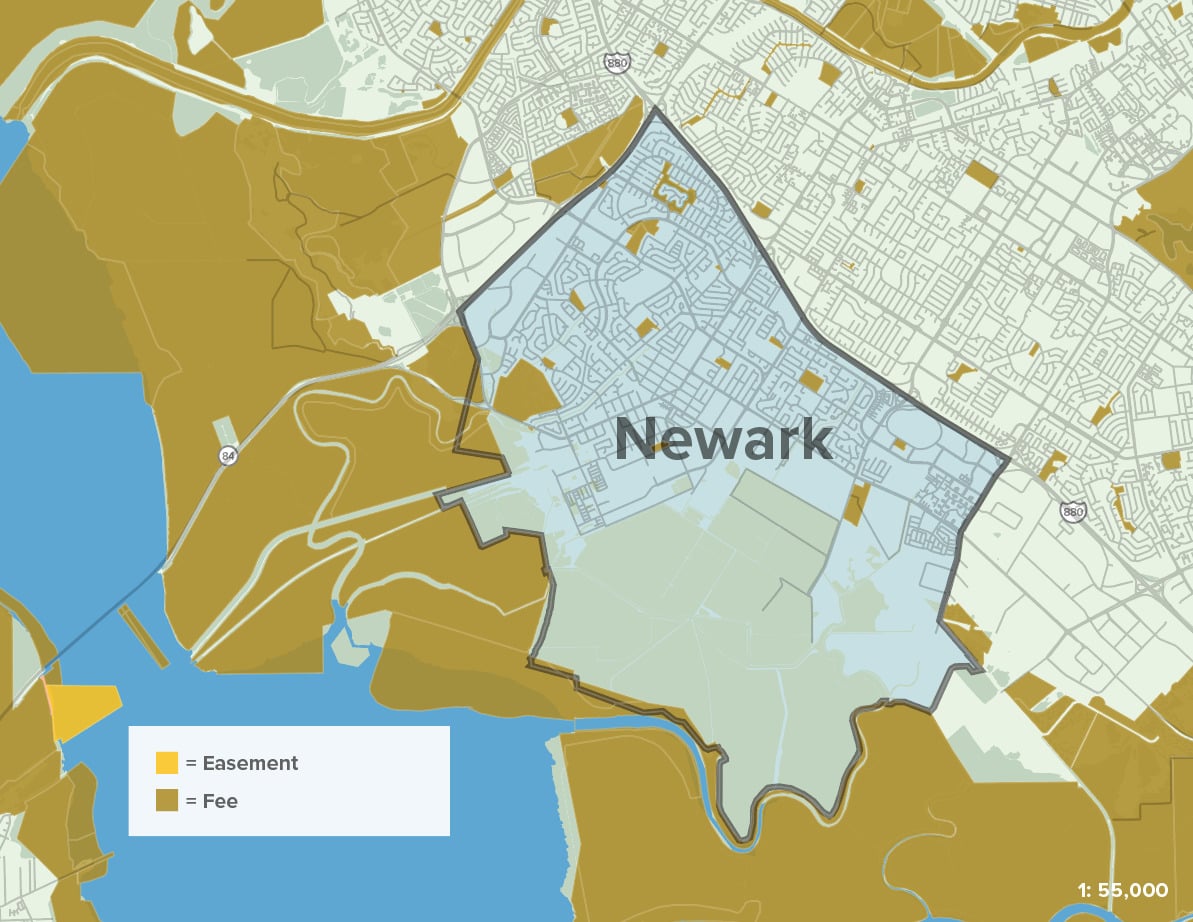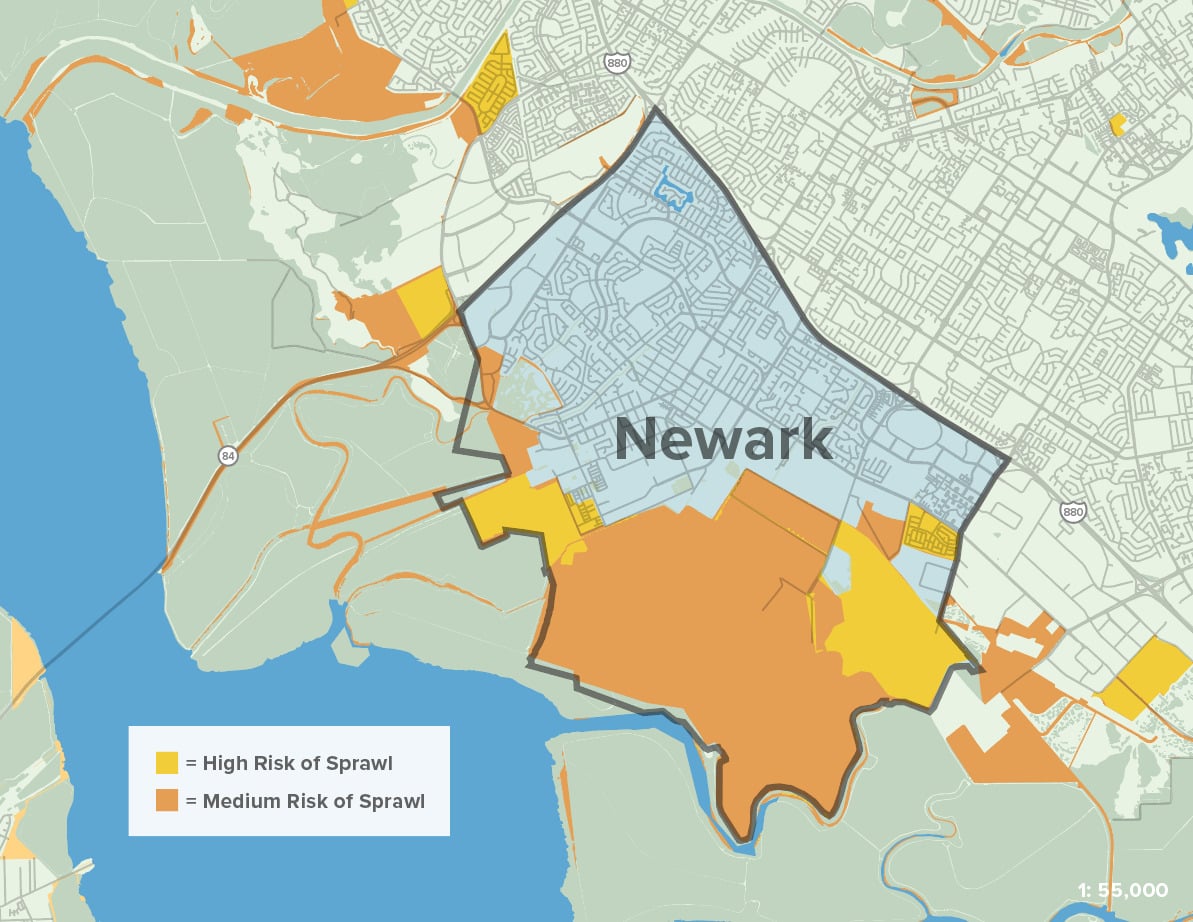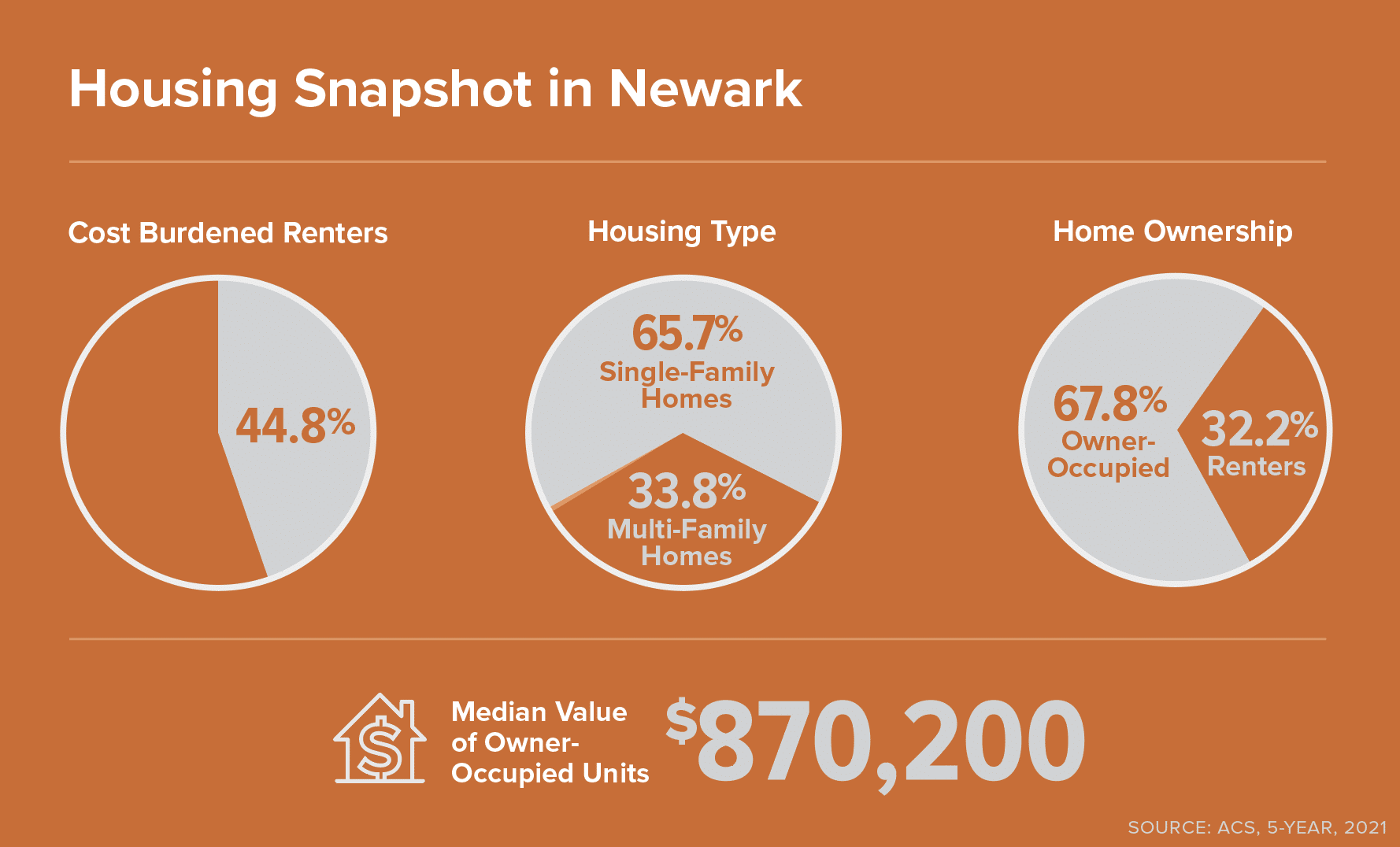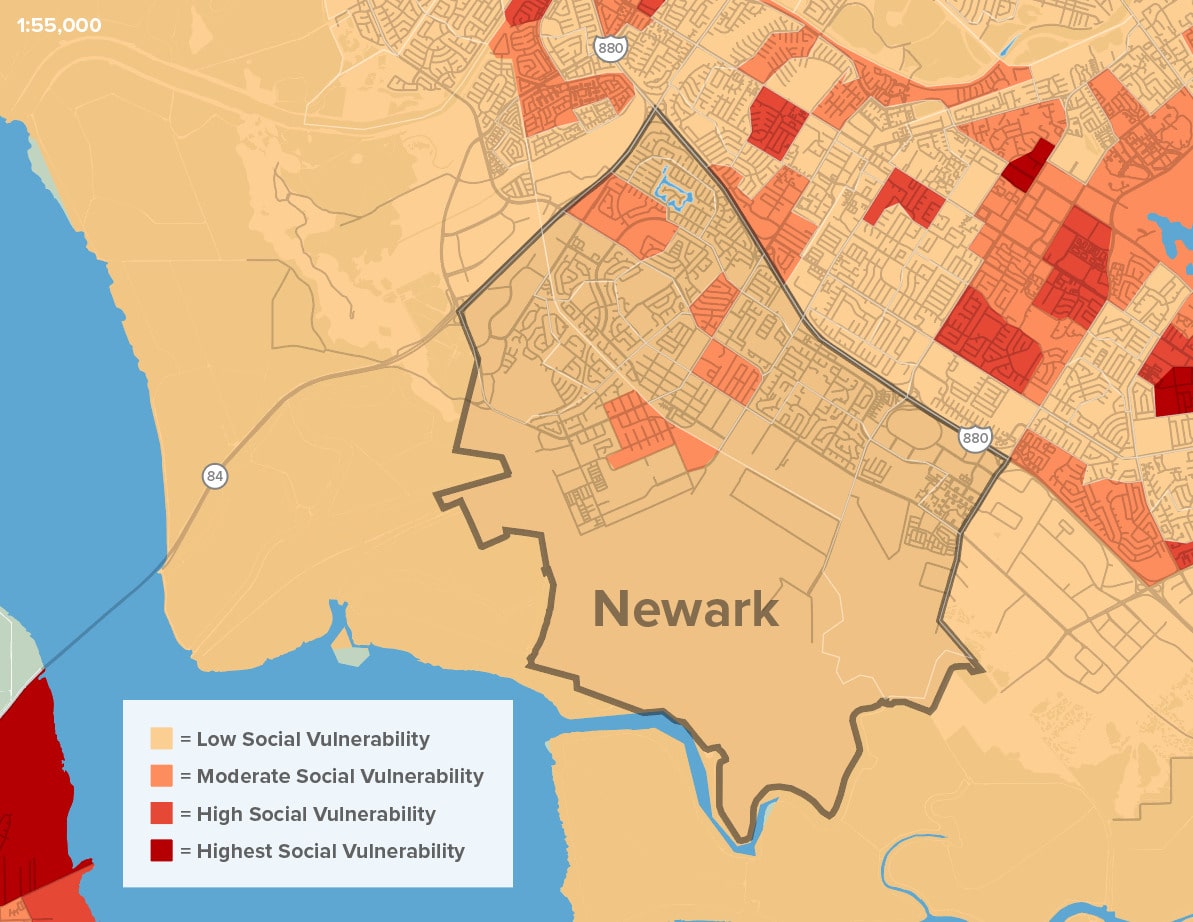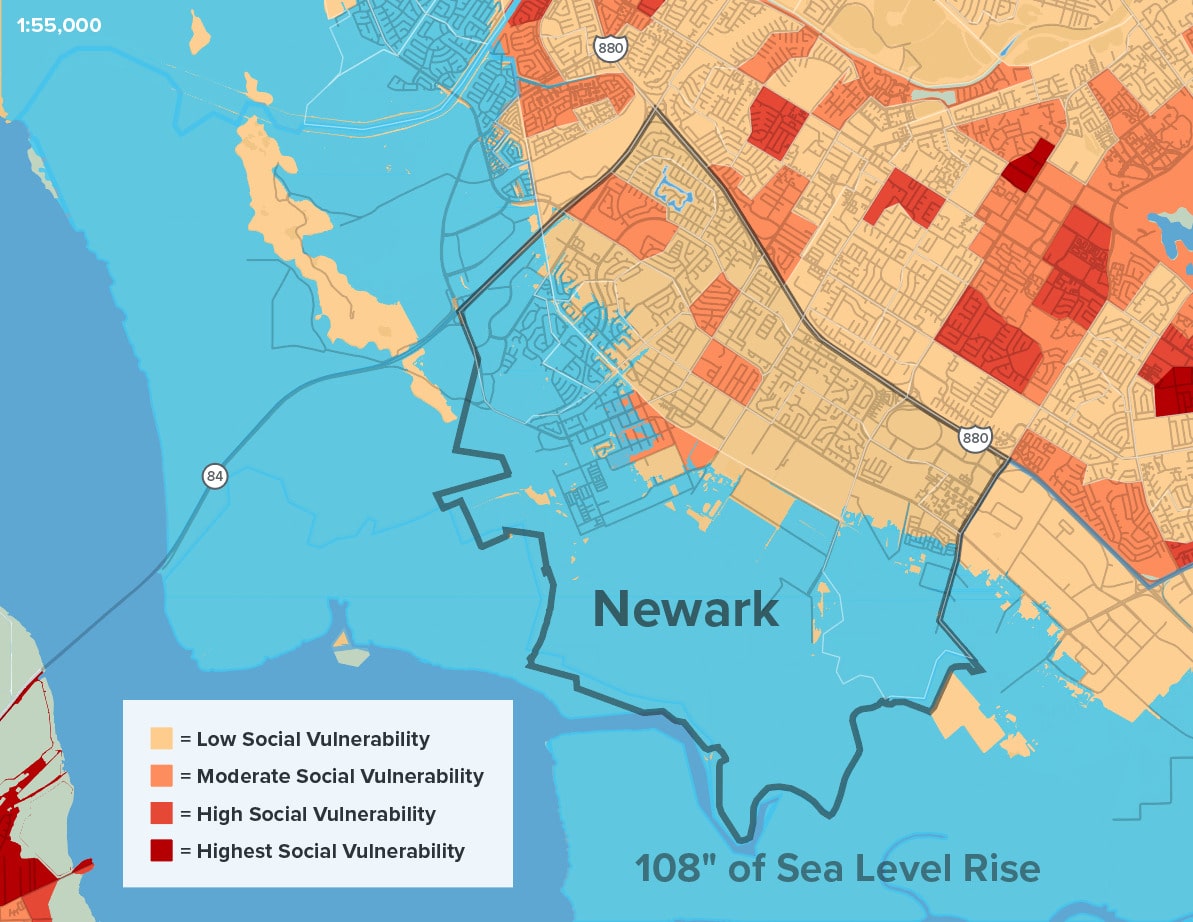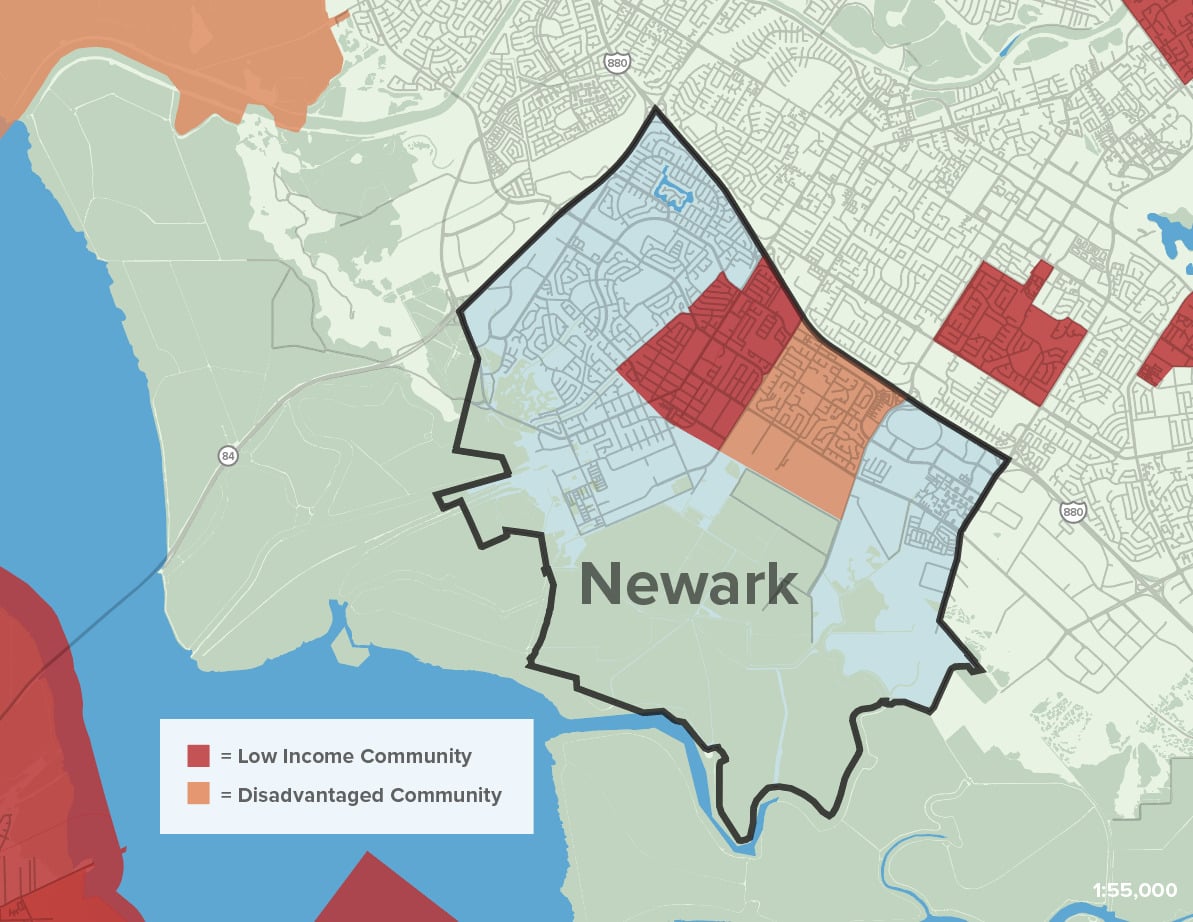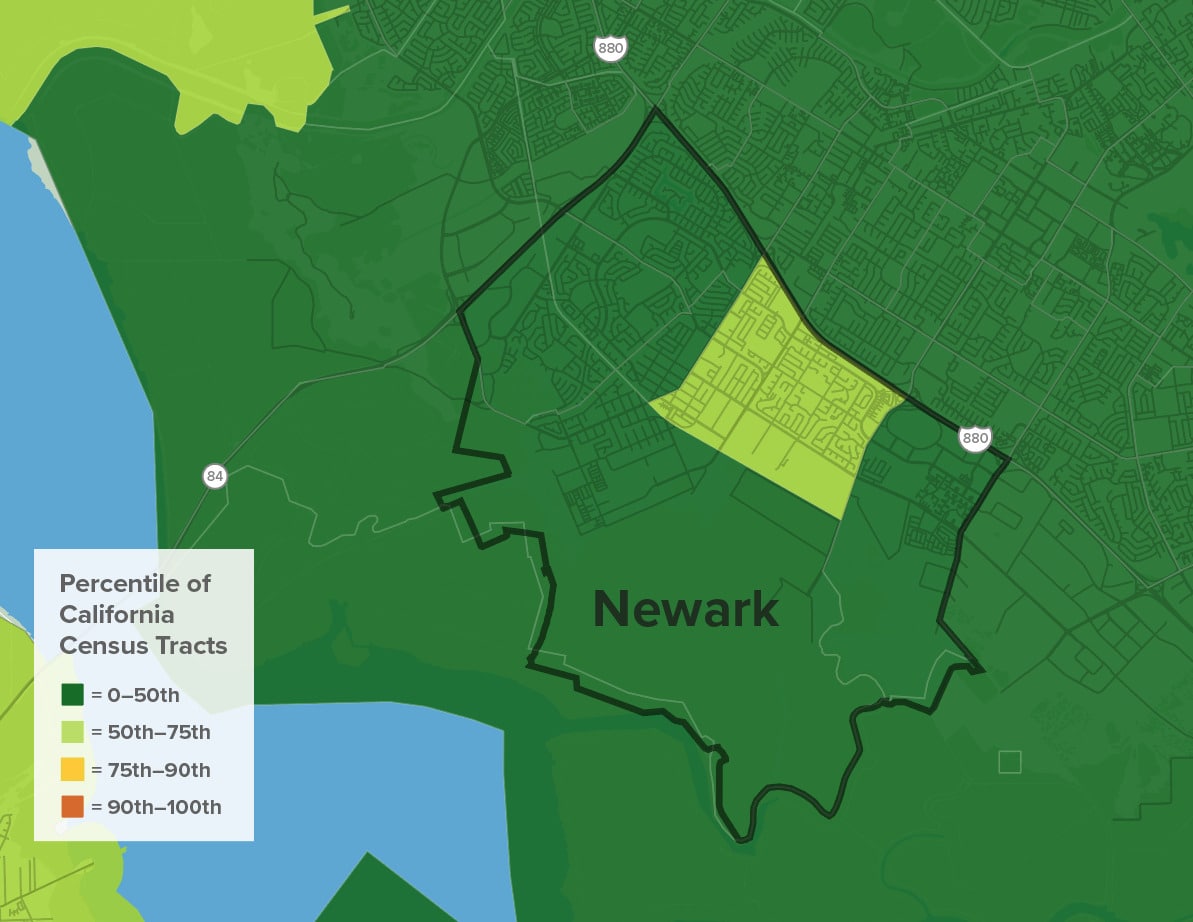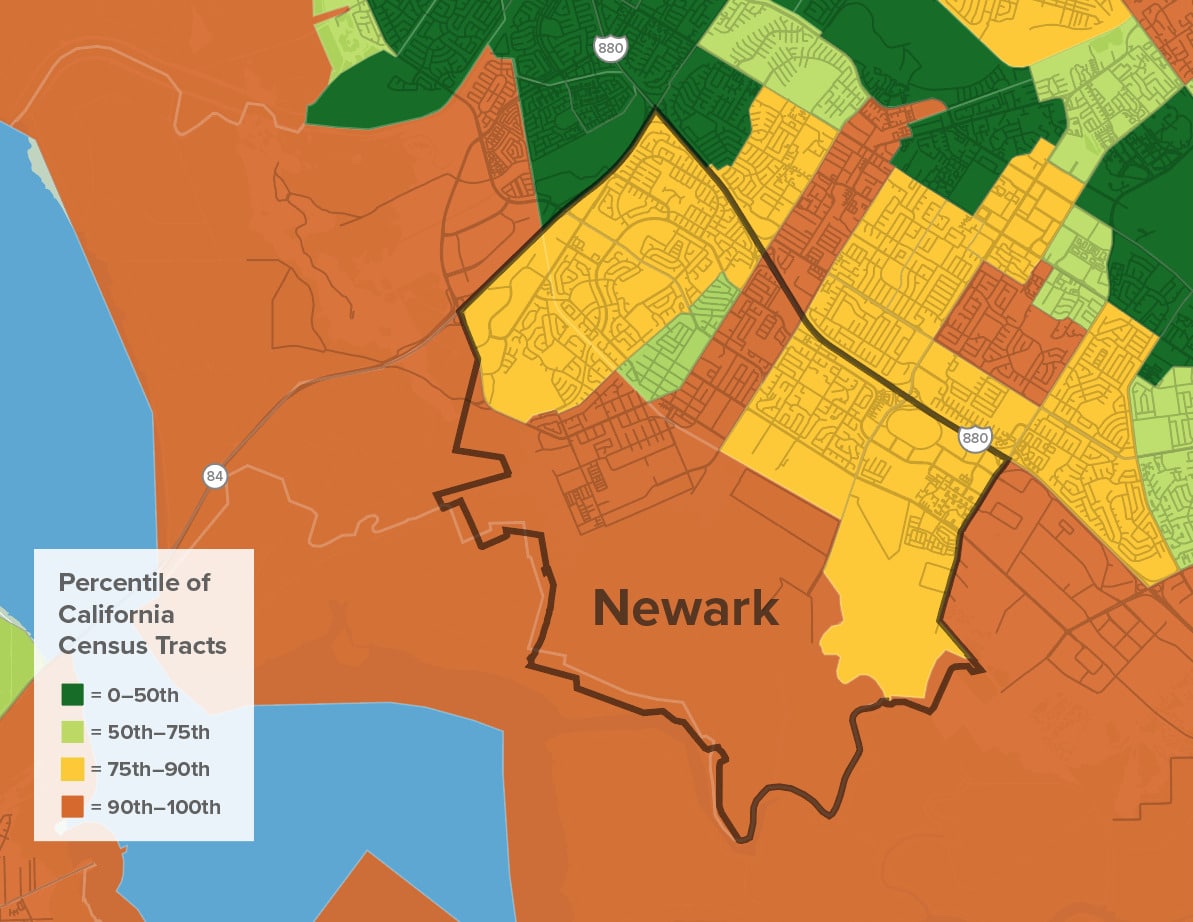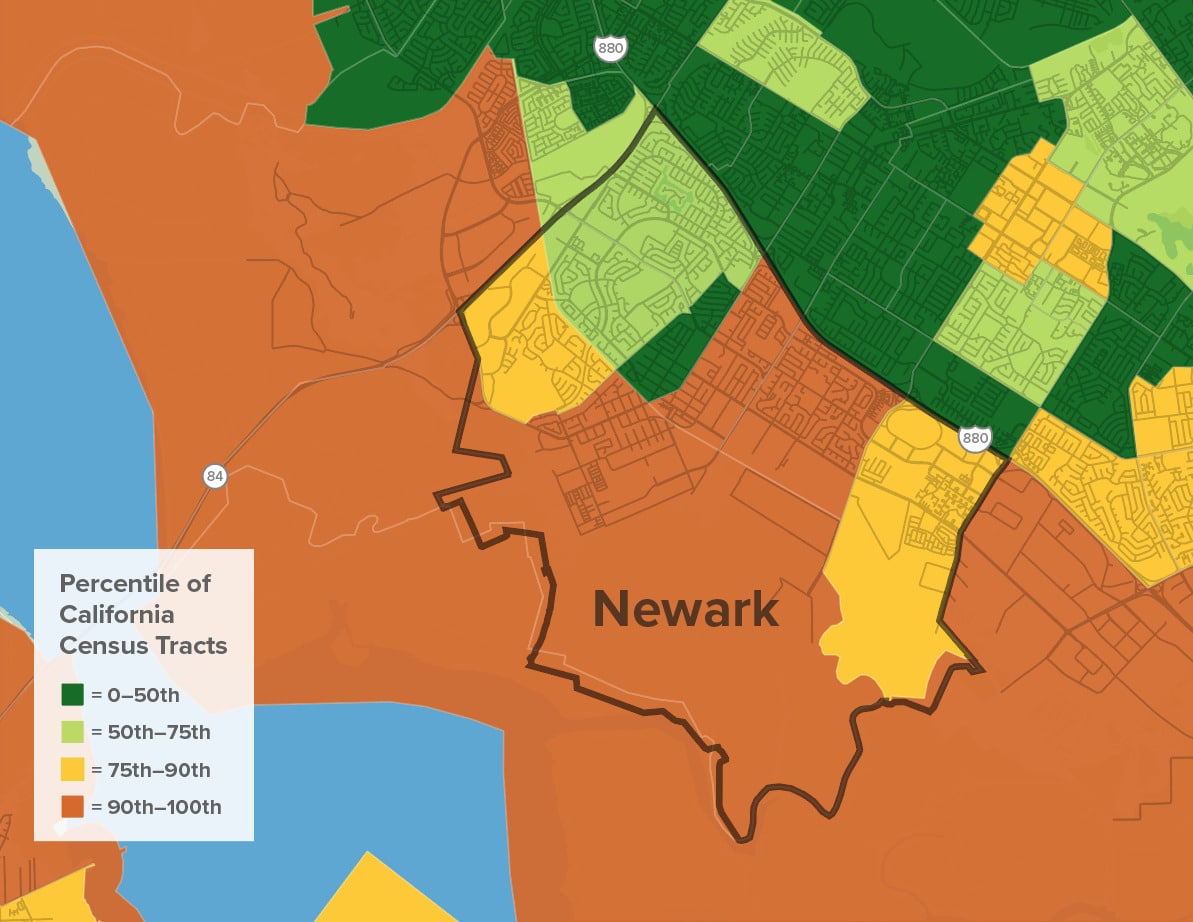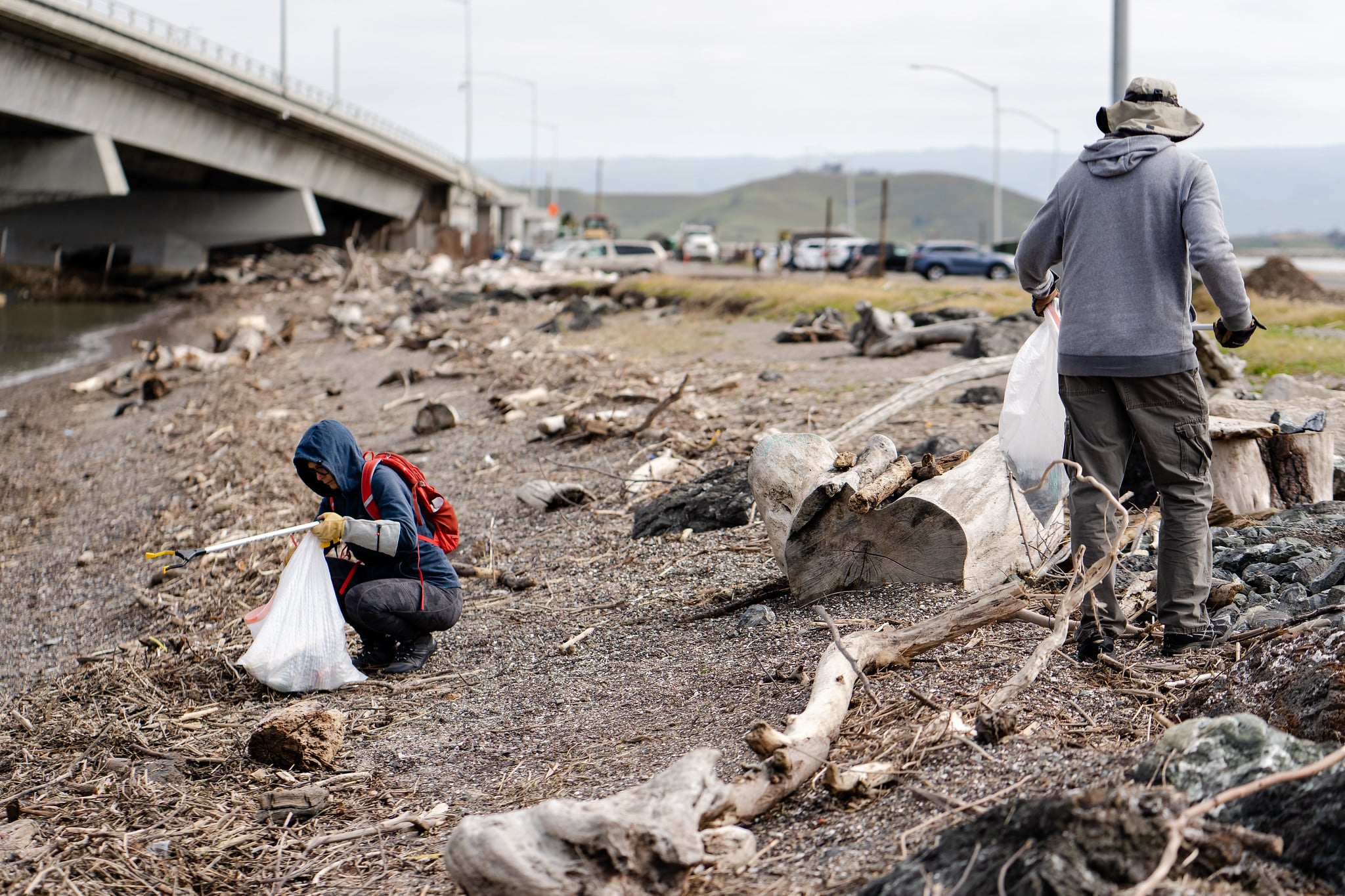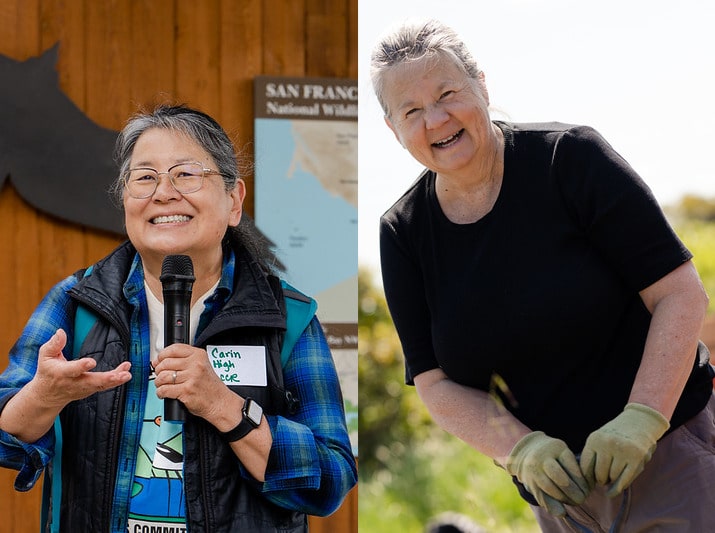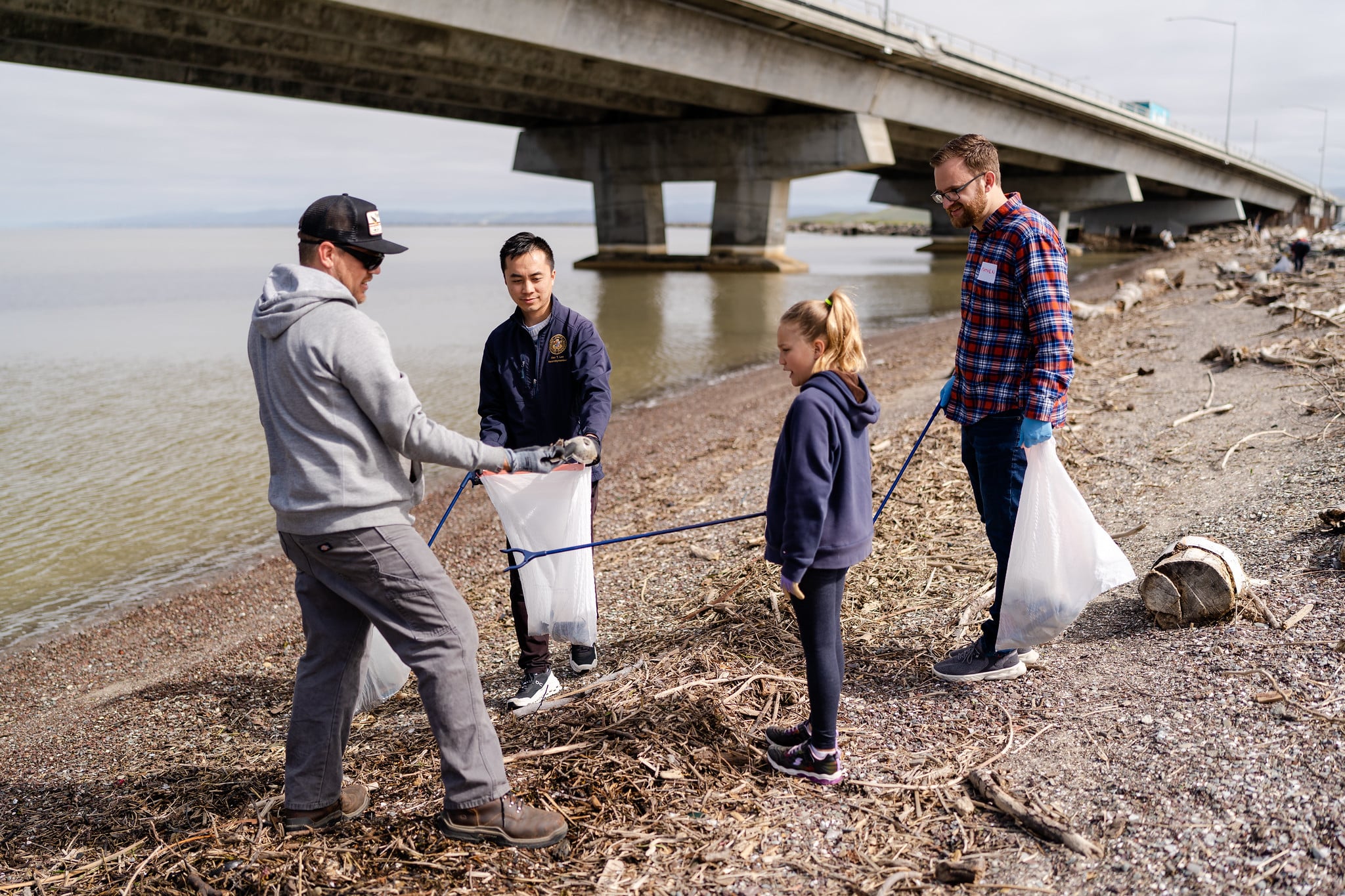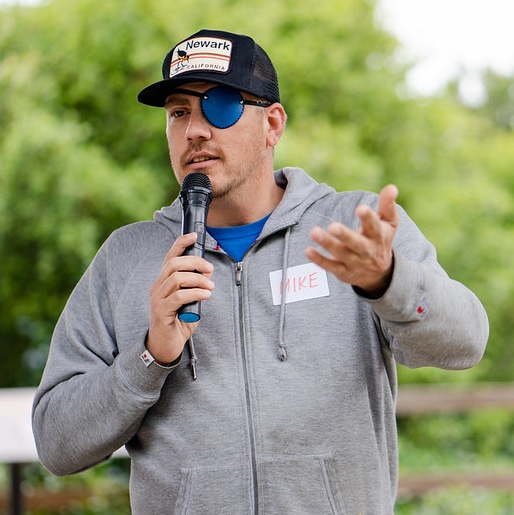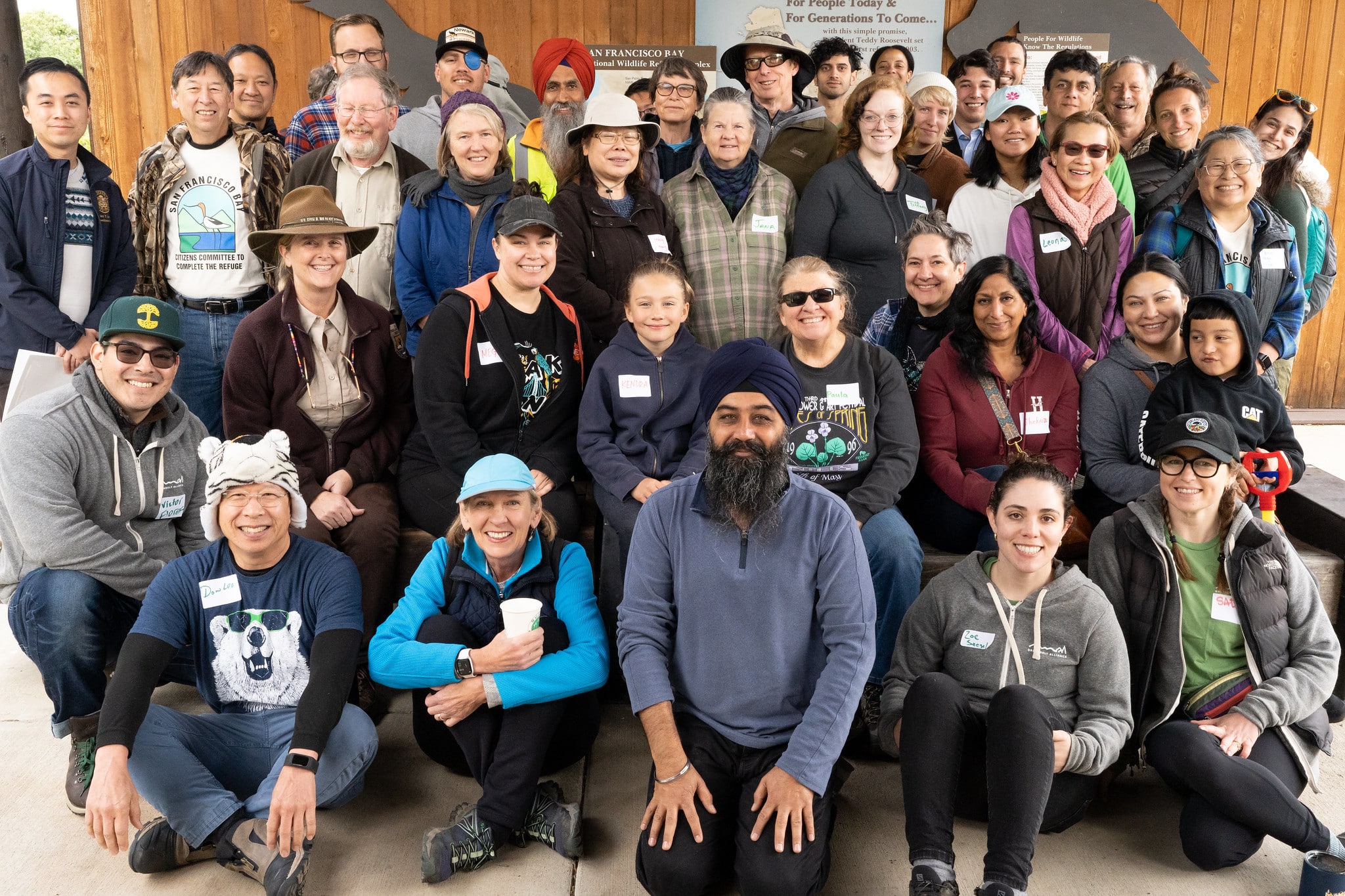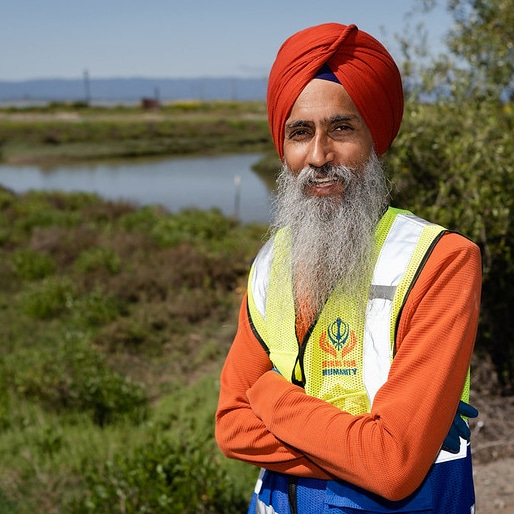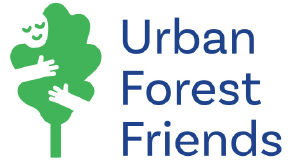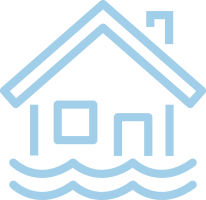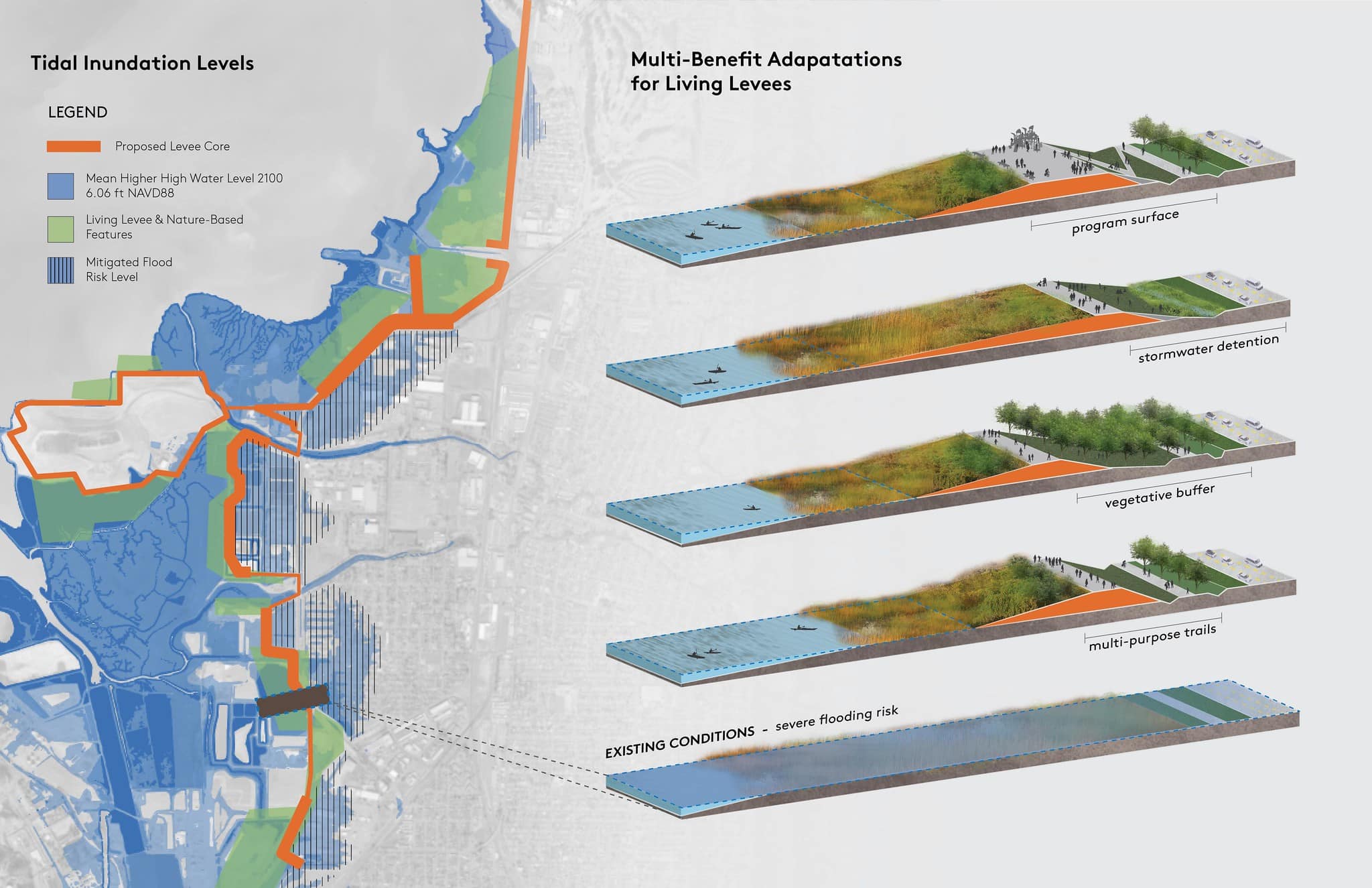Climate Vulnerabilities
Topics
Newark faces a multitude of water-related climate risks. As sea levels rise over time, flood risk will increase along the shoreline, but shallow groundwater will also cause flooding in inland areas as rising seas push the groundwater all the way to the surface, resulting in flooding, unstable infrastructure, and building instability. Newark has some of the only undeveloped, unprotected wetlands in the Bay, and if swift climate action is taken, these wetlands and other nature-based solutions can provide protection against impending flood risk.
Sea Level Rise
In 50 years, with 66 inches of sea level rise, exacerbated by a 100-year storm, a large portion of the City of Newark—including shoreline industrial uses, the Union Pacific Railway, and the existing wetlands—are likely to be inundated with water.
Sea Level Rise
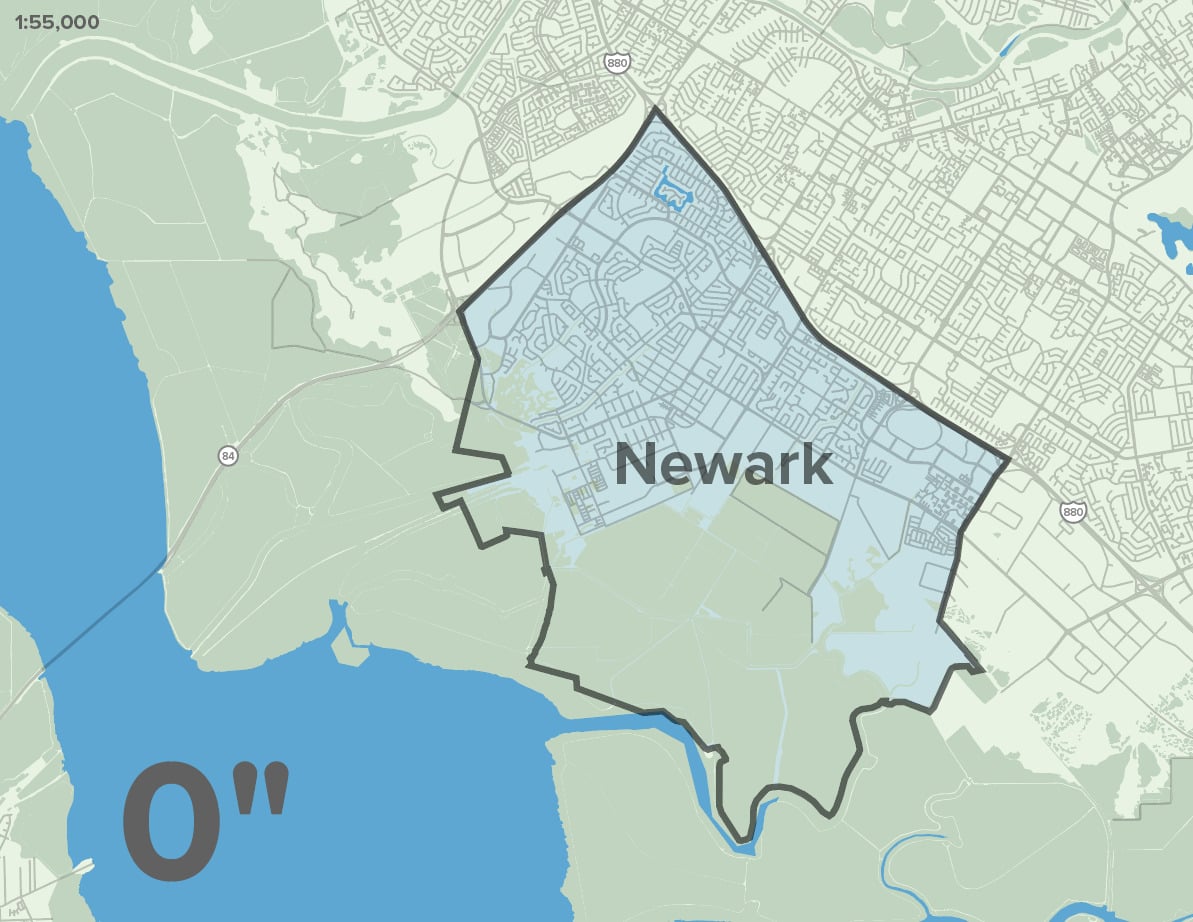
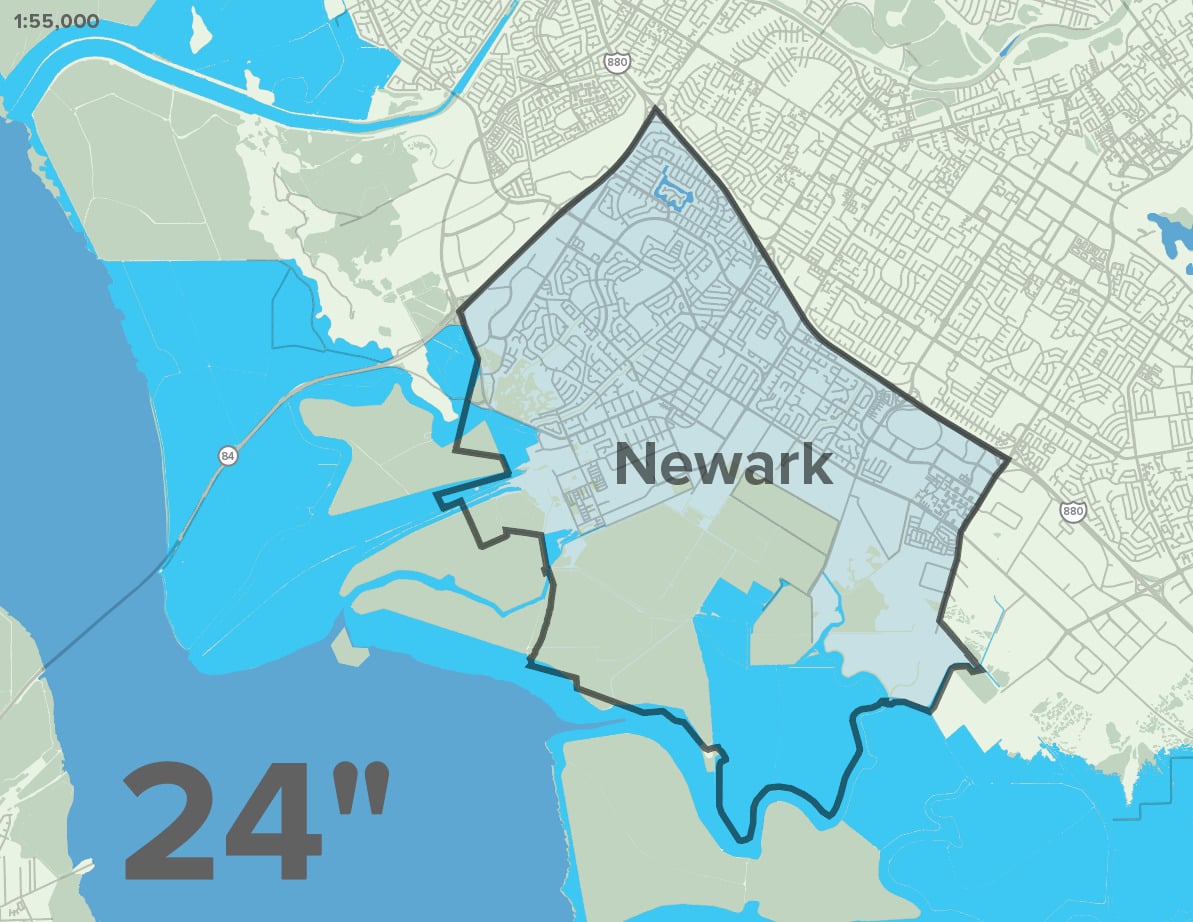
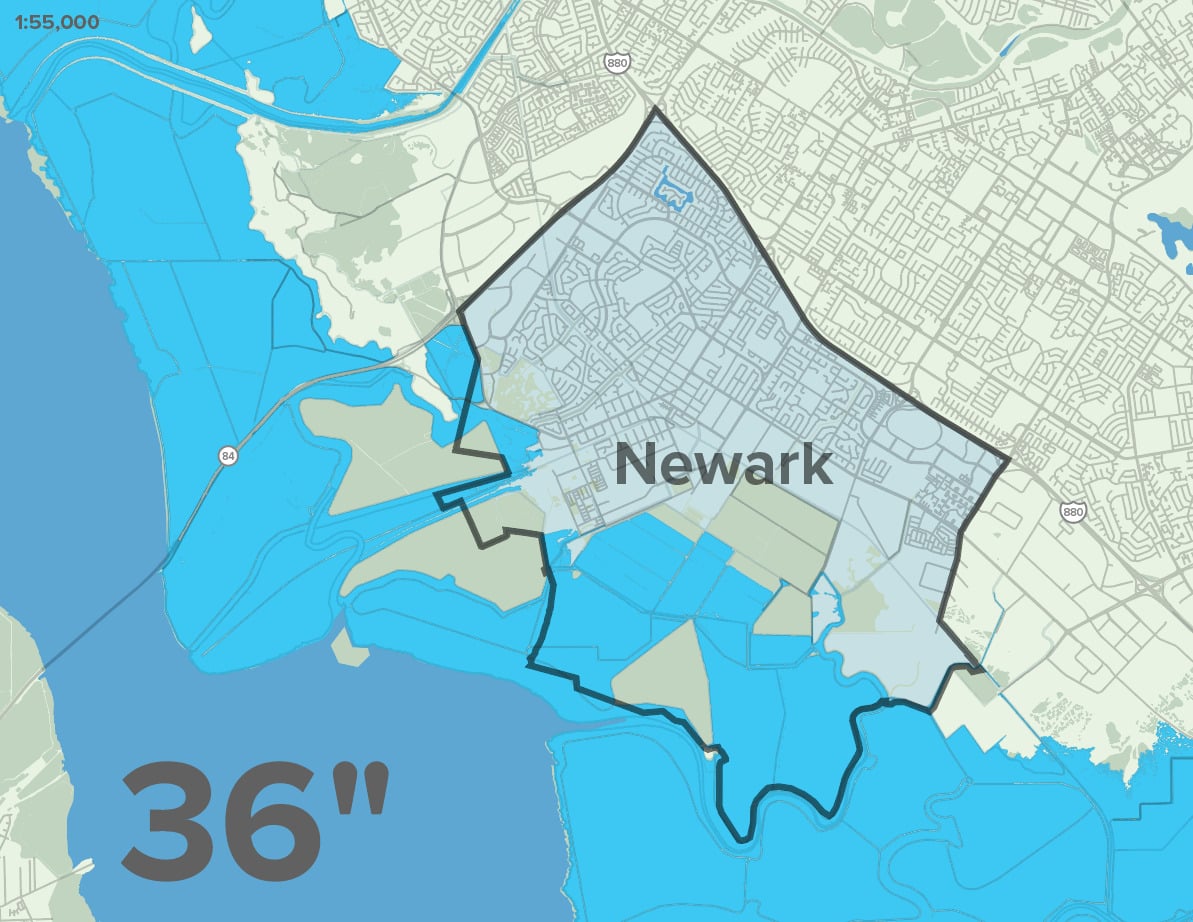
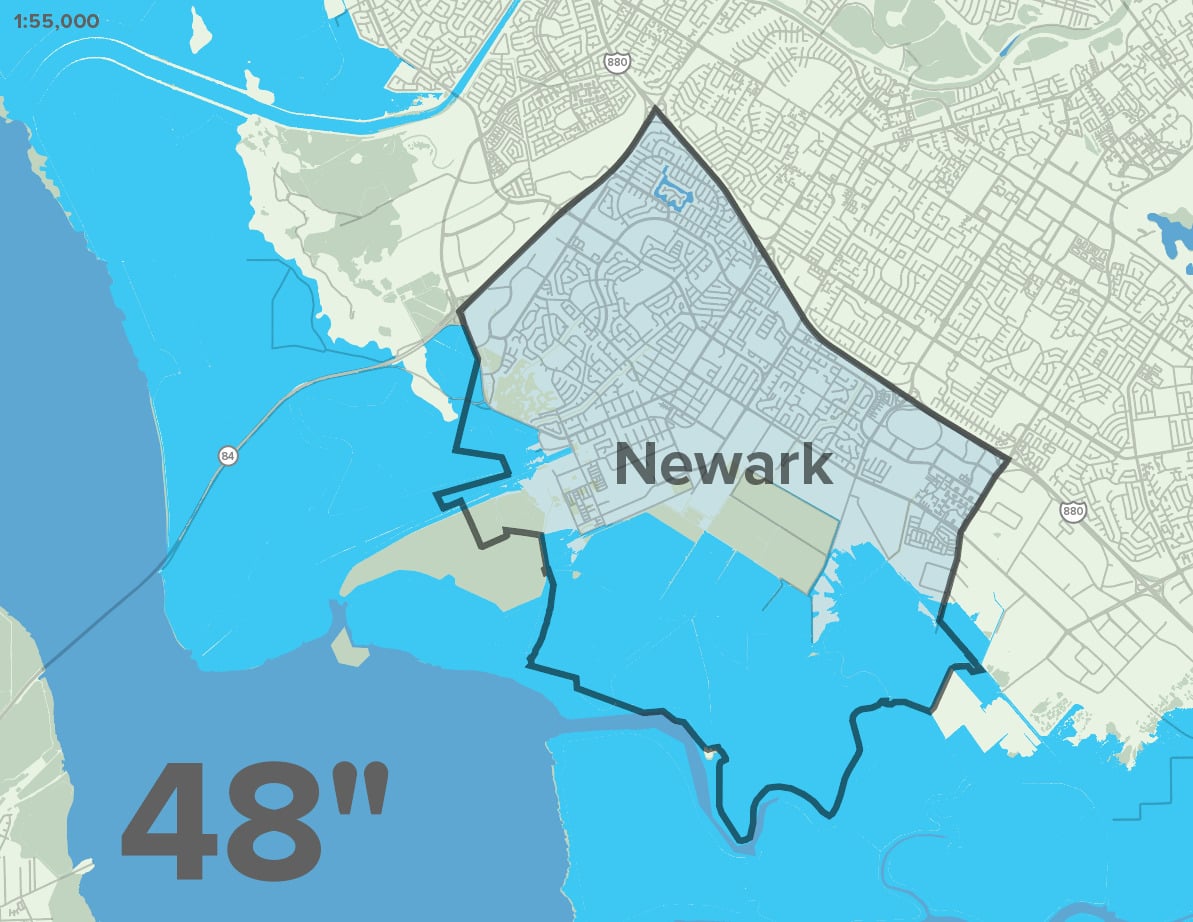
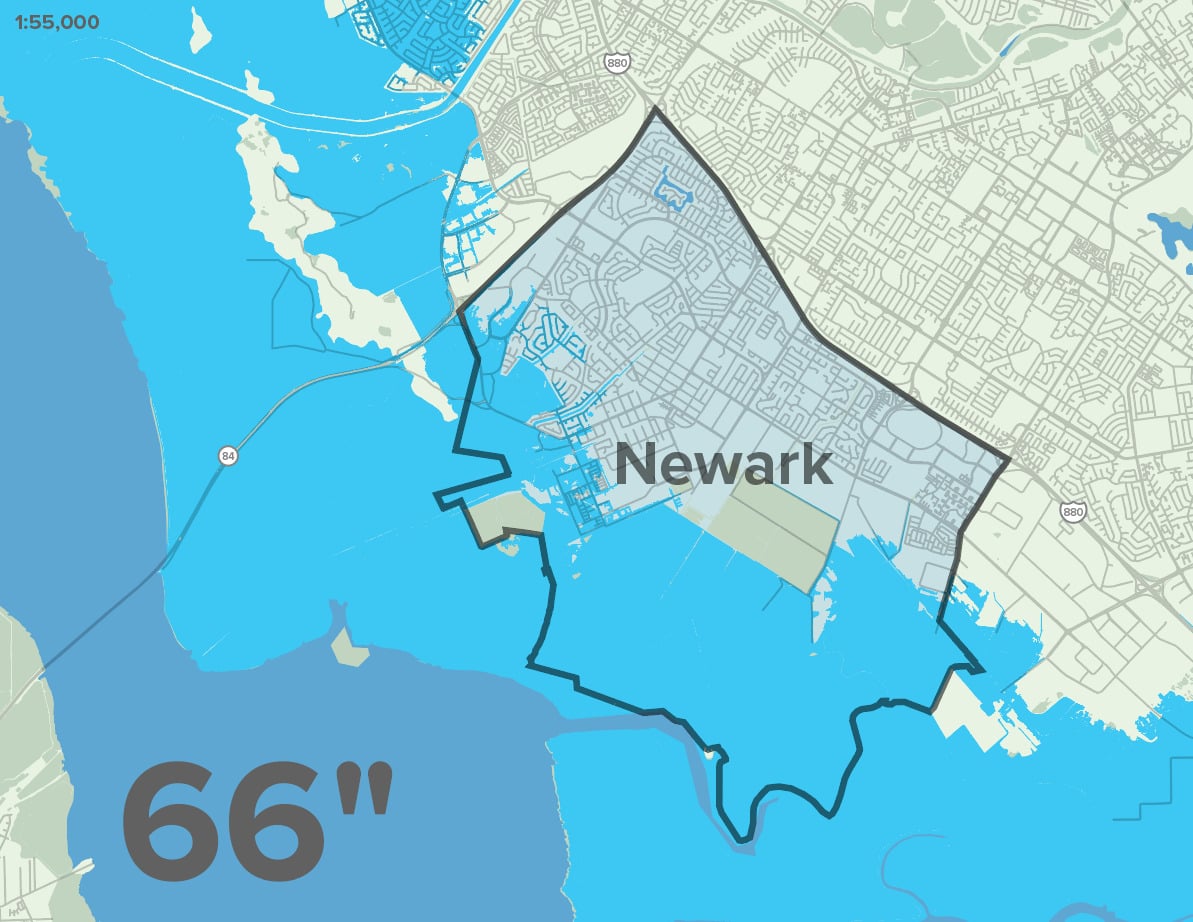
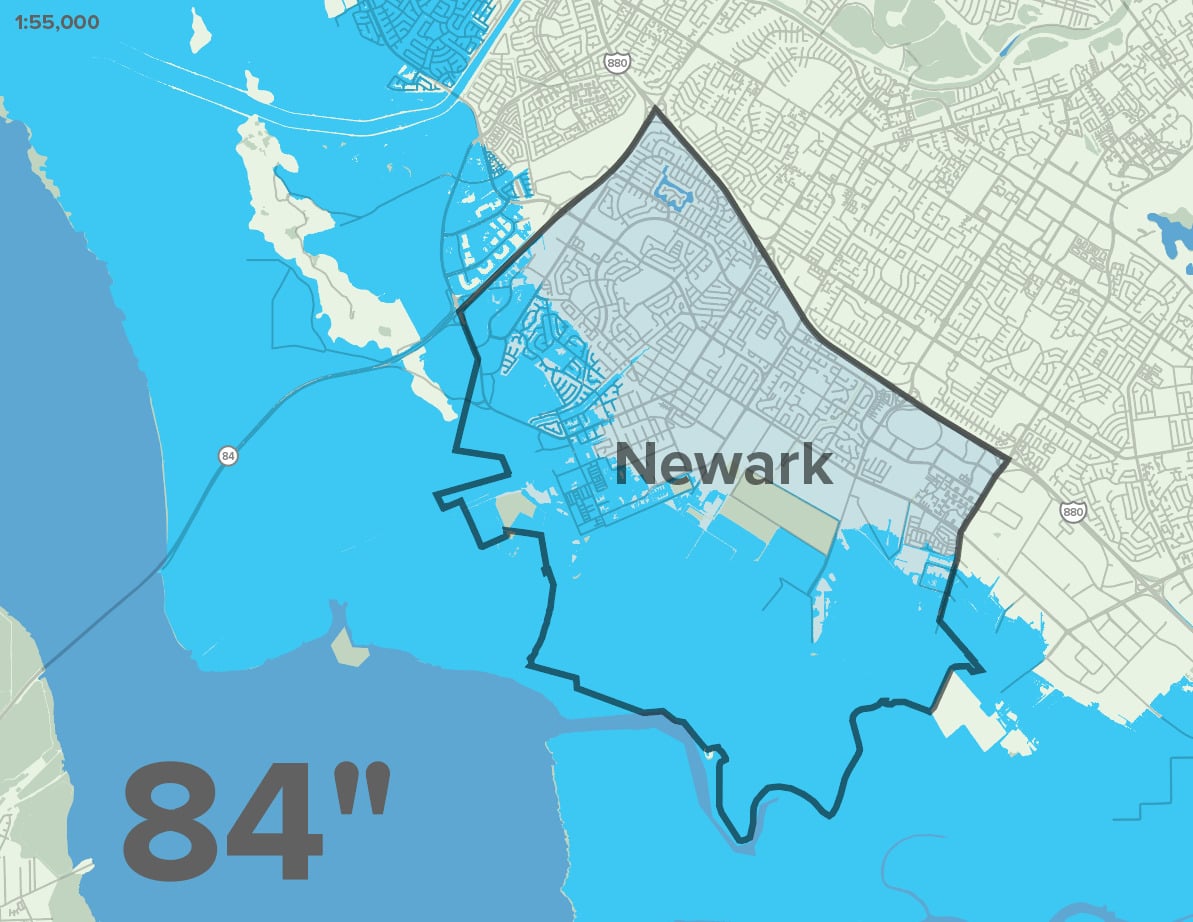
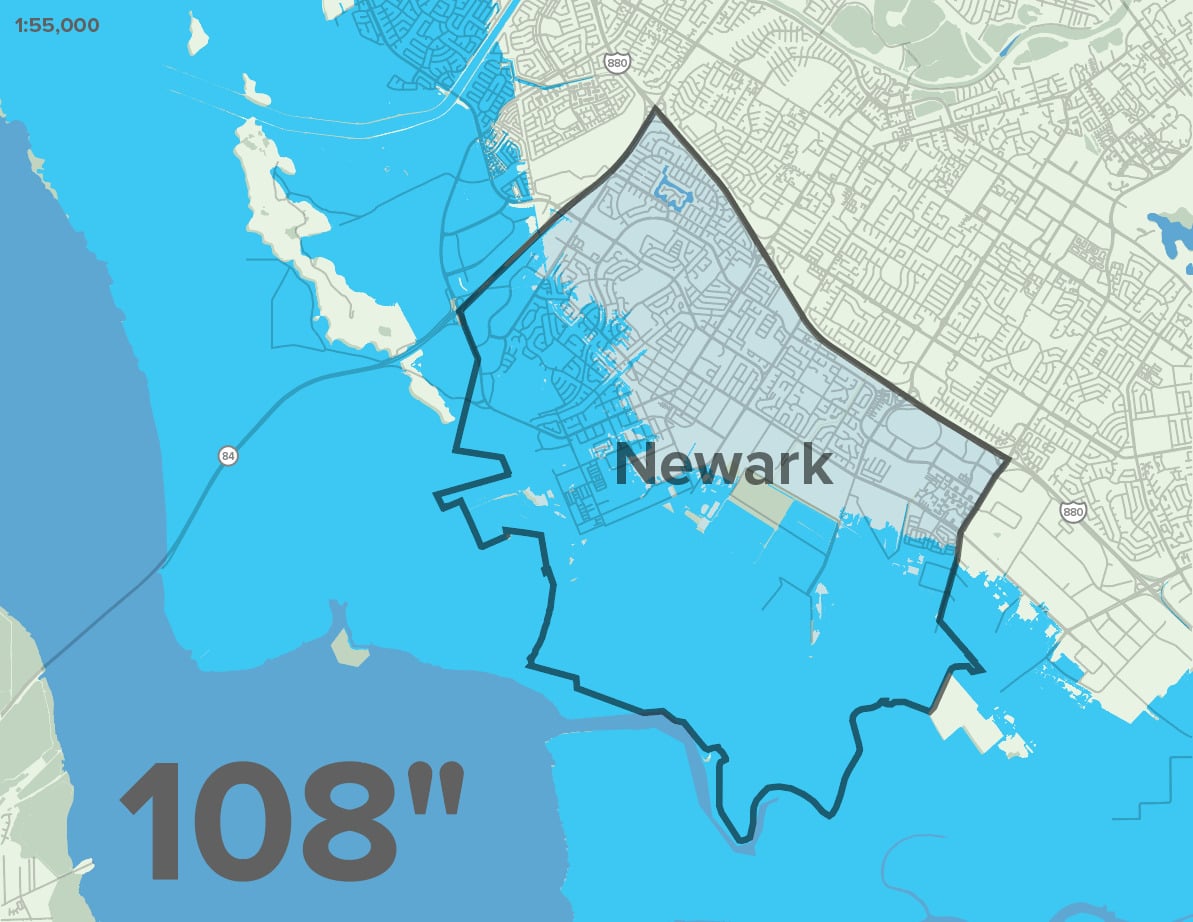
Newark is bordered by a remarkable ecosystem of wetlands and coastal habitat that is currently protecting existing development and assets from flooding. However, 88 inches of sea level rise, likely by 2100, will impact approximately 3,700 parcels and put homes and businesses at risk if no action is taken. Furthermore, Newark’s existing shoreline protection is provided by railroad tracks that serve to connect the region—transporting goods and people. This vital infrastructure will be impacted with just 36 inches of water rise. The flooding of these industrial areas will not only impact the city’s and region’s jobs and economy, but will also expose and deploy soil contaminants into the water system.
Citation:
Adapting to Rising Tides: Bay Convervationn and Development Commission (BCDC). 2020. “ART Bay Area Sea Level Rise and Shoreline Analysis Maps.” Accessed June 2, 2023. https://explorer.adaptingtorisingtides.org/download
Shallow Groundwater
Newark’s shallow groundwater table will cause flooding disruptions far sooner than sea level rise alone. With just 12 inches of water, which is expected in the next 10 years, residential and industrial lands will experience rising water levels, permanent flood conditions, impacts to underground infrastructure, and increased liquefaction risk
Groundwater Threat
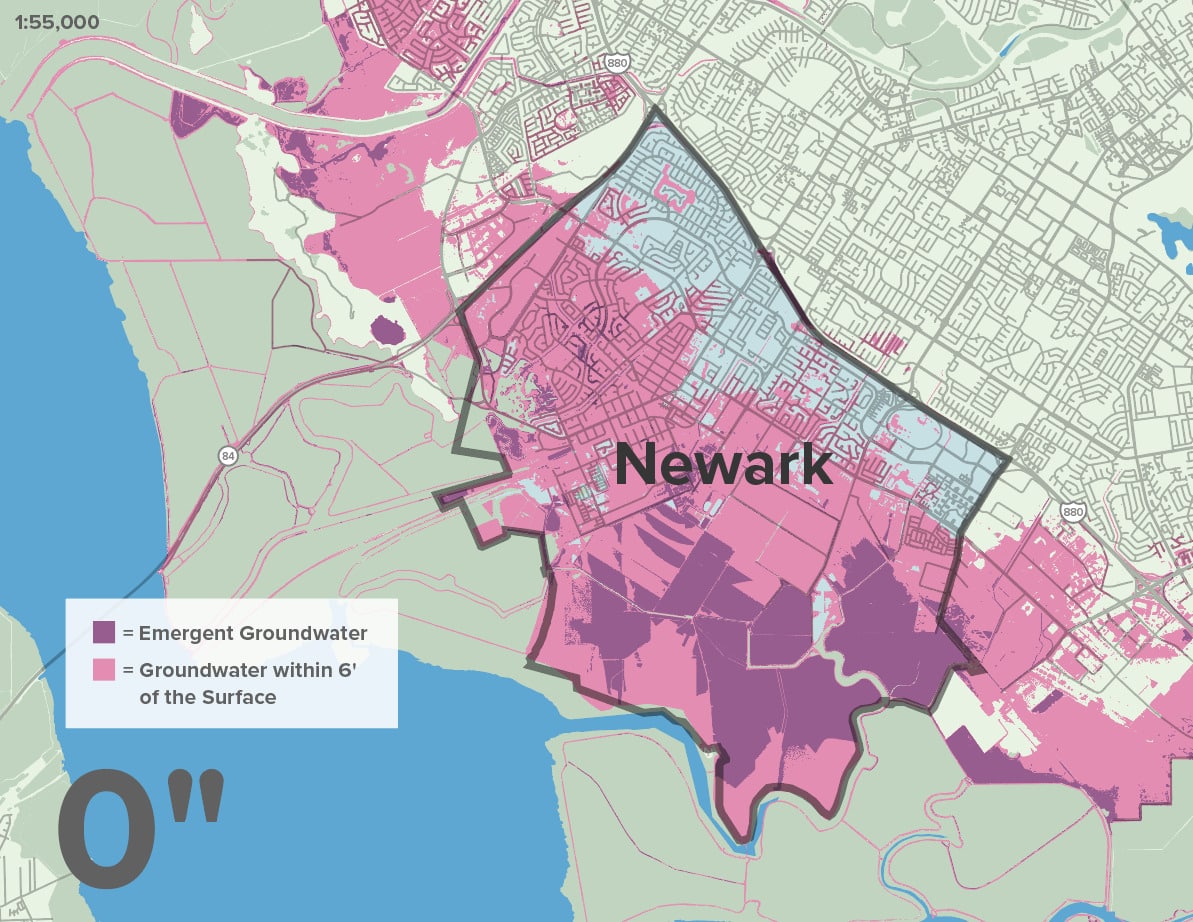
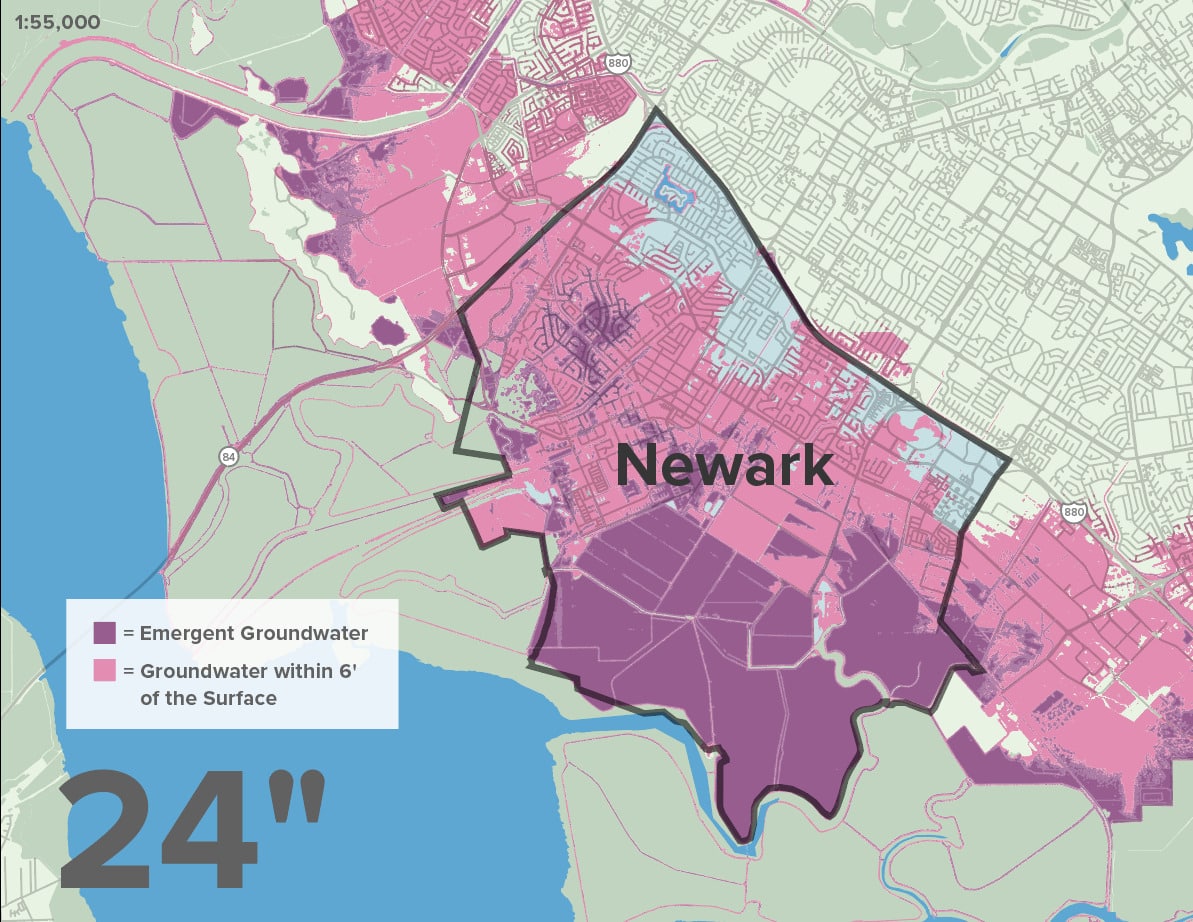
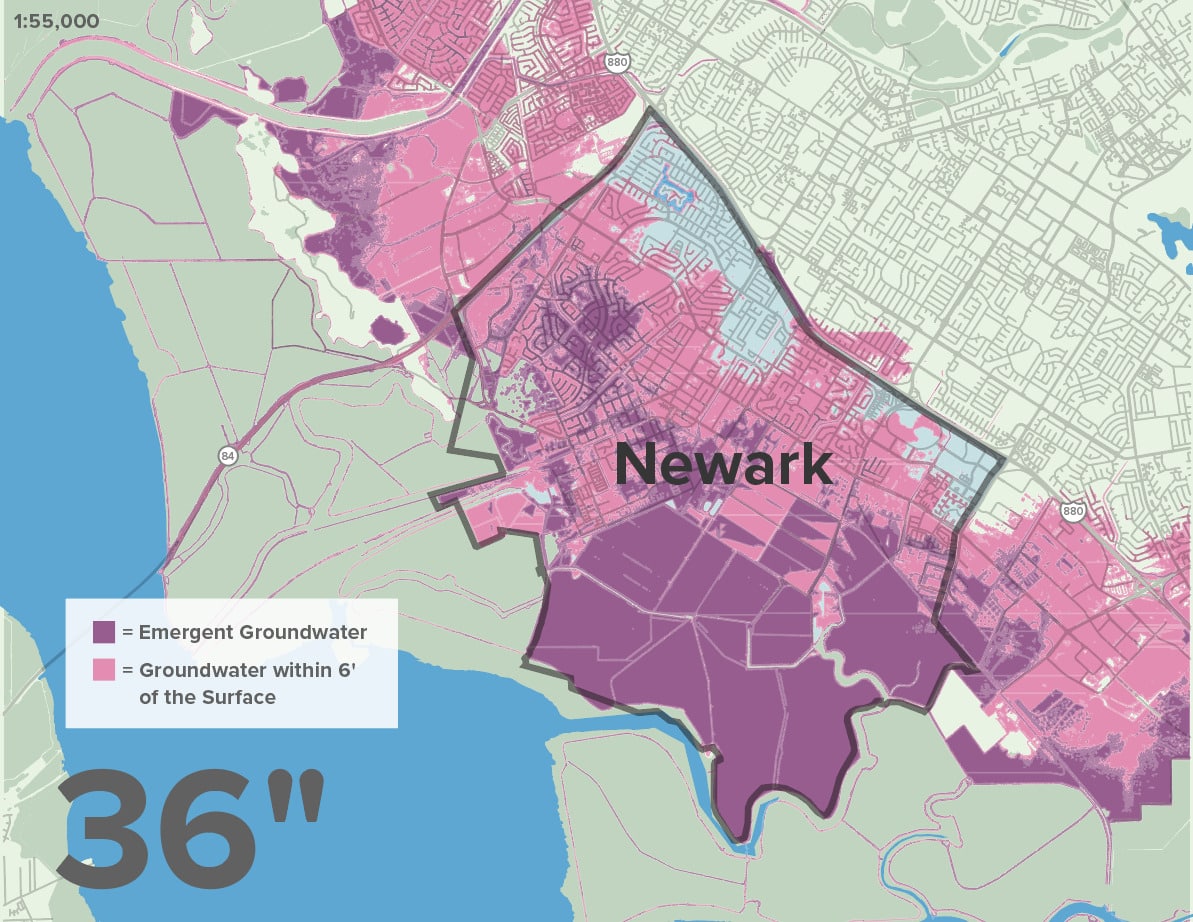
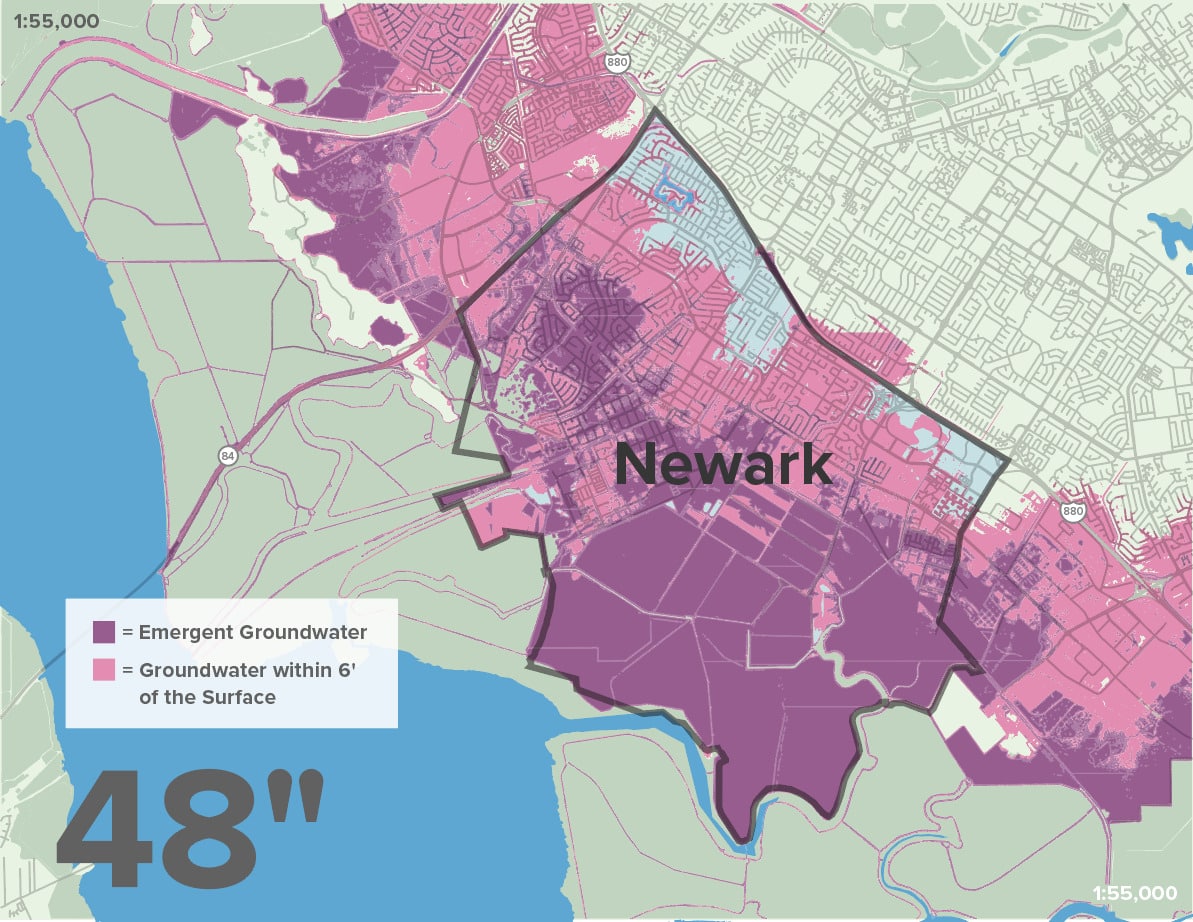
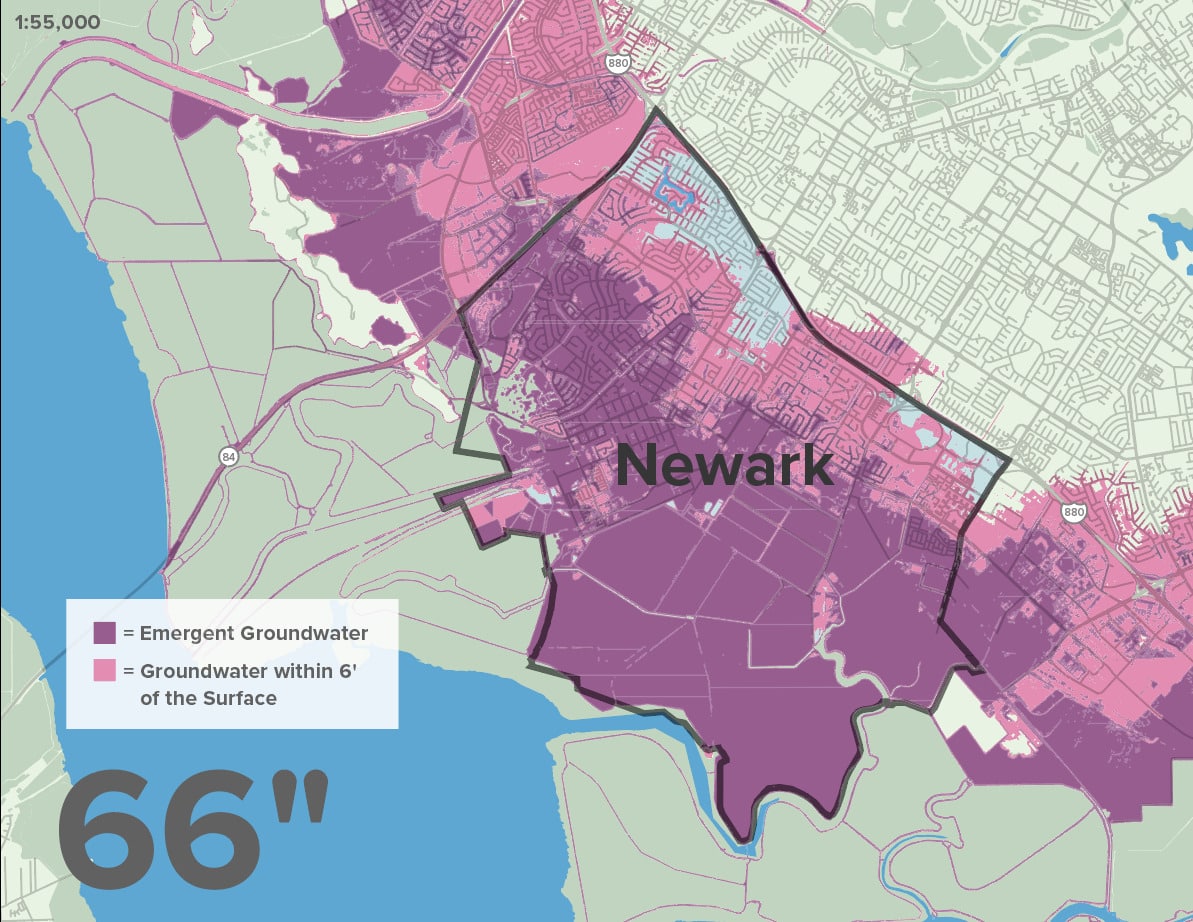
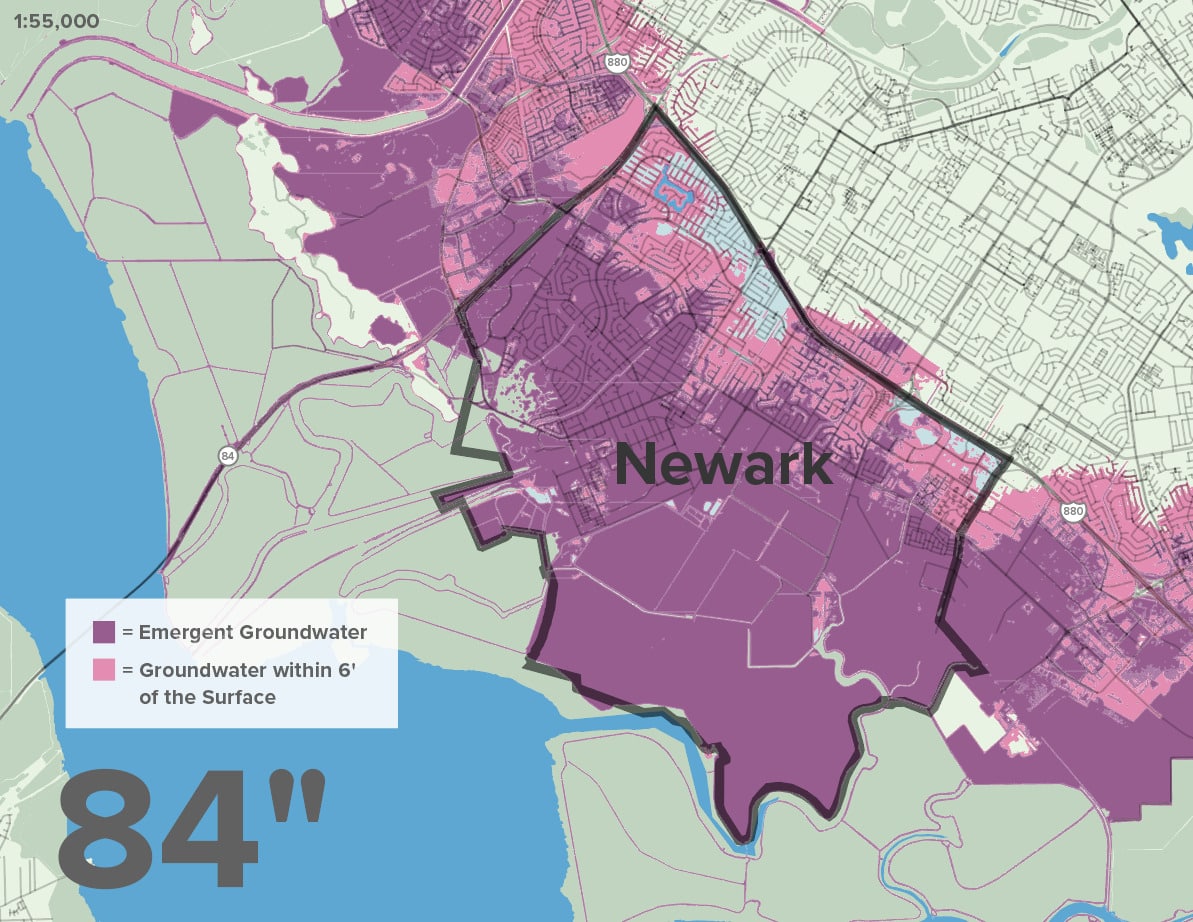
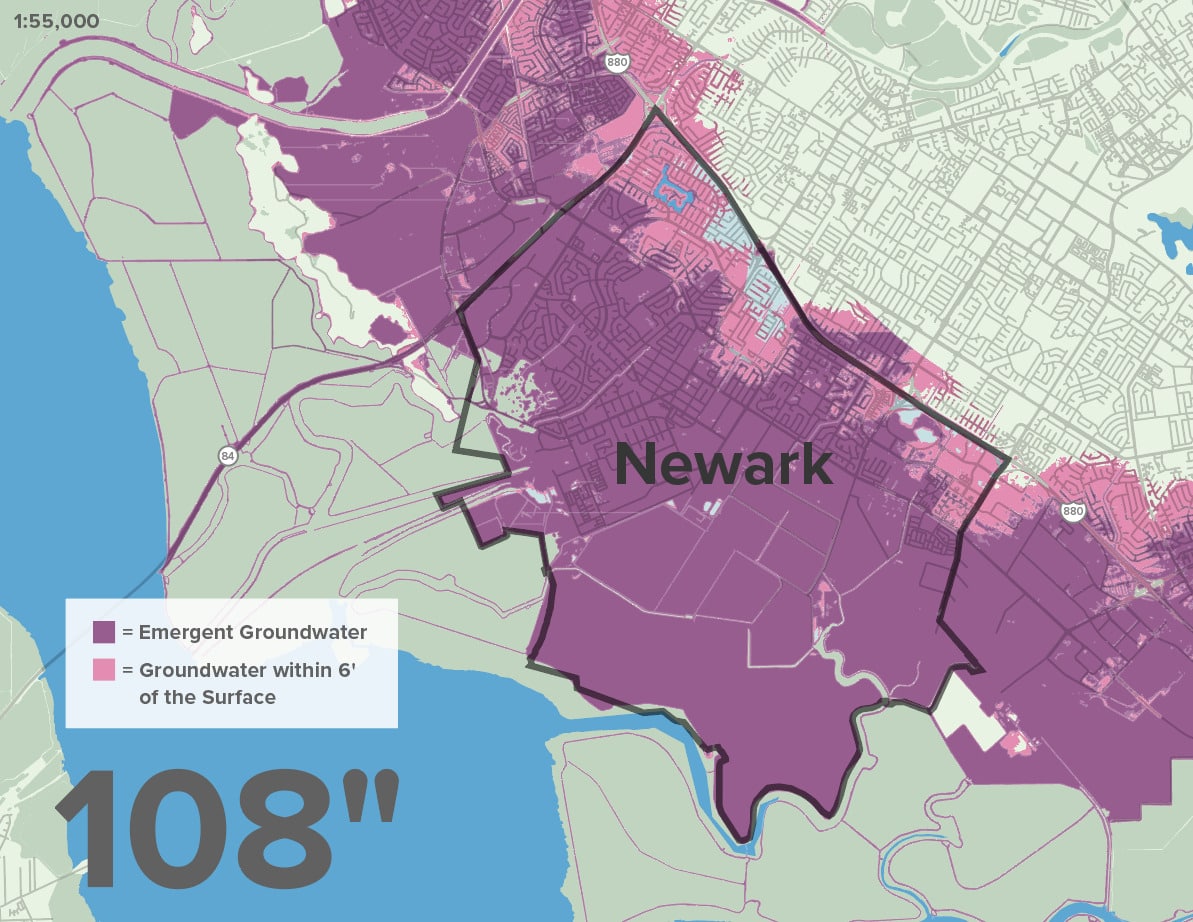
While many are aware of the threats of rising seas, new research has modeled the impact that sea level rise will have on areas with shallow groundwater conditions. Like many developed areas, Newark has a significant amount of infrastructure underground, including gas and electrical lines, telecommunication cables, water and sewer pipes, and building foundations.
As sea level rise pushes groundwater levels up, Newark will experience emergent groundwater conditions, causing water to pool at the surface and cause unstable conditions for buildings and potential corrosion of underground infrastructure. Shallow groundwater conditions present the risk of deploying toxic chemicals and pollutants located in the soil.
Newark’s shoreline industrial uses near Central Ave and the residential communities located in North Newark, between Jarvis and Mayhews Landing, are likely to be some of the first places to face this new challenge.
Map Citations:
San Francisco Estuary Institute (SFEI). 2022. “Shallow Groundwater Mapping: Alameda County.” Accessed June 1, 2023. https://www.sfei.org/data/shallow-groundwater-mapping.
Regional Governance
Newark’s location, nestled between Fremont and Union City on a stretch of shoreline just outside the coastal zone, makes the area jurisdictionally complex when it comes to governing and funding sea level rise adaptation.
Flooding and sea level rise do not respect jurisdictional boundaries. Small cities like Newark may see greater success in adaptation planning when they collaborate with their neighbors on larger regional resilience efforts—bringing in more partners and resources to plan for more effective and efficient projects.
Newark must work with neighboring shoreline communities to plan comprehensively for long-term adaptation. The Hayward Shoreline Adaptation Plan (link), led by HASPA, has modeled what this effort could accomplish. In collaboration with Union City, Fremont, the Bay Conservation and Development Commission (BCDC), the Alameda Flood Control District, and other partners, Newark can take early action to plan for adaptation that will not only result in risk reduction, but also provide key co-benefits to wetland ecosystems and nearby communities.
Opportunities for Nature-Based Solutions
Newark’s developed shoreline areas leave little room for Wetland Migration, but restoration of the undeveloped shoreline areas and implementation of nature-based solutions such as the restoration of tidal wetlands, offer near-term solutions to mitigate the impact of flooding.
Recommended Nature-Based Solutions in Newark
The existing Newark wetlands provide a natural barrier to flooding and storm surge, but as sea levels rise, wetlands will be inundated with water if they are prevented from moving inland. Protection and management of Newark’s wetland areas, identification and preservation of wetland migration spaces (low-lying undeveloped upland areas adjacent to tidal wetlands), are nature-based solutions that have been identified as strategies to build resilience to flooding while simultaneously offering benefits to ecosystems and people.
Supporting wetland migration through nature-based adaptation is not only in Newark’s best interest, but is also important for achieving the Bay Area’s regional equity goals. When one shoreline community develops their shoreline, studies have shown that other communities across the Bay will pay the price through greater flood impacts and pricier adaptation measures (Hummel et al, 2021).
Map Citations:
SFEI Adaptation Atlas: San Francisco Estuary Institute (SFEI). 2019. “San Francisco Bay Shoreline Adaptation Atlas GIS data, Version 3.” Accessed June 1, 2023. http://www.sfei.org/data/adaptation-atlas-data.


